Tracking down Spomeniks, following the course of the Danube and battling with the elements in one of the Balkans’ least visited countries
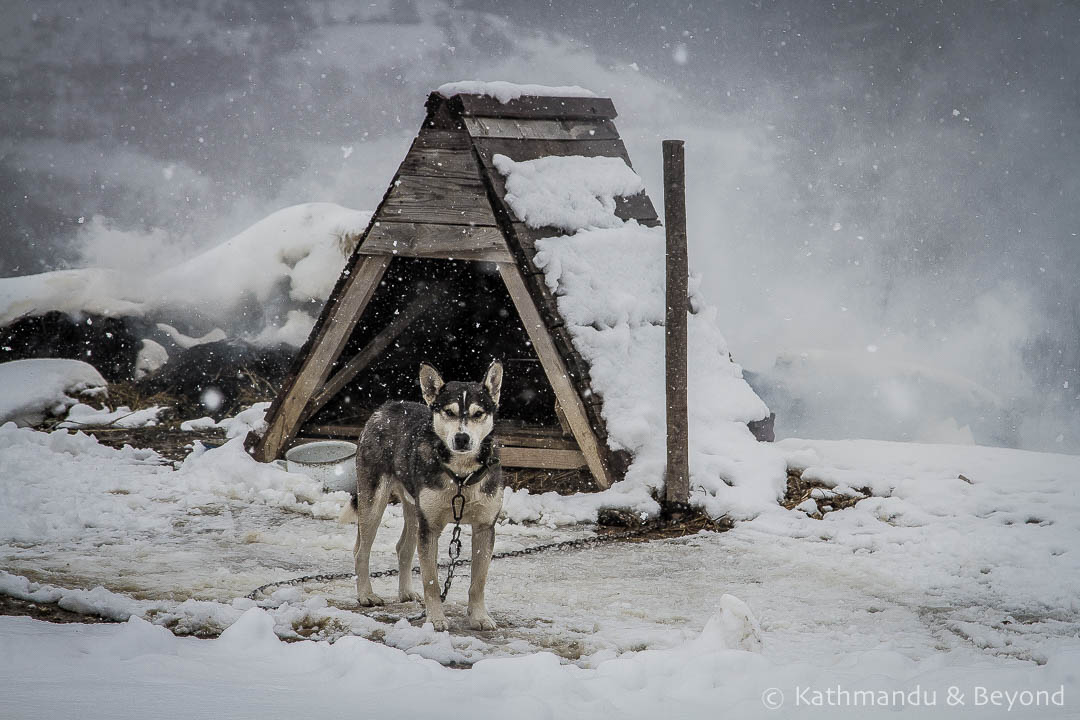
When we hired a car earlier this year and drove around Serbia, we packed a hell of a lot in. We would normally be on the road by 8am and not checked into our hotel for the night until at least eleven hours later. We ended up covering 1,650 kilometres and although our nine days exploring Serbia was undoubtedly a superb experience, by the end of it we were totally knackered and in need of a holiday! (*)
(*) Which we inadvertently got. After a visit to A&E at a hospital in Skopje a couple of days after dropping off the car, I discovered I had an inguinal hernia that needed operating on sooner rather than later. To cut a long story short, I had the operation and was told I wasn’t to lift anything heavy for at least a month. Although I argued that a 10kg backpack was not that heavy in my opinion, I took the advice of the surgeon, stopped travelling and rested up for a month or so!
Apart from the scenery (Serbia, like all of the Balkan countries, is incredibly scenic), the focus of our trip was to track down as many Tito-era World War II-related monuments and memorials as was feasible in the time we had (*). The Serb/Croat word for this type of monument is spomenik. In short, they were erected from the 1960s up until the 1980s all across what was then Yugoslavia at the behest of President Josip Tito to commemorate events that took place during World War II. I first came to learn about spomeniks through two blogs that I read on a regular basis. The first is by an Australian guy called Nate Robert. His blog is called Yomadic. The other is by Darmon Richter, who writes The Bohemian Blog. Both write beautifully-crafted and fascinating articles about off-beat destinations with a prime focus on the Balkans and Eastern Europe (Yomadic also writes a lot about Iran). If you haven’t read either, I would urge you to do so.
(*) In Yugoslavia, World War II was often referred to as the National Liberation War or National Liberation Struggle.
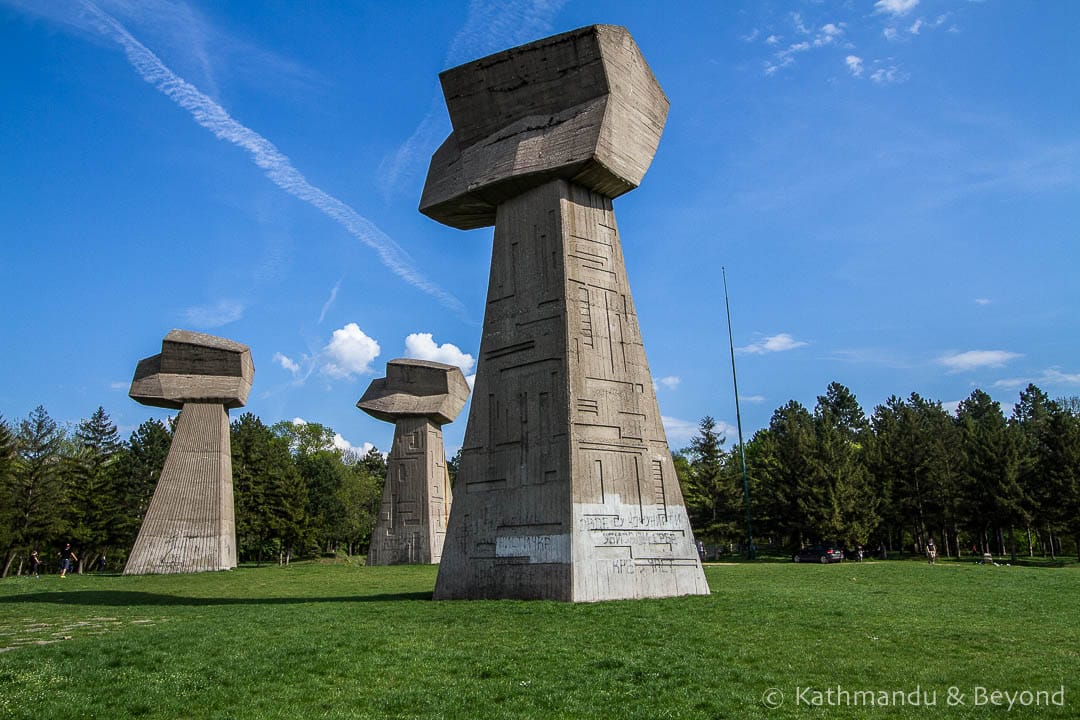
This led me to find a website called the Spomenik Database. One of the reasons I am not going to go into too much detail about what spomeniks are etc. is that the Spomenik Database is the definitive guide and to try and emulate it would, quite frankly, be an insult. Plus, there isn’t a huge amount of detail out there about spomeniks apart from on this site and I’m not into plagiarism. Should you want to learn more about spomeniks in general or indeed a specific one then look no further than this site. The website is also invaluable if you want to locate spomeniks for yourself as Don Niebyl (who compiled the database) has pinpointed each one with exact coordinates, even including the best place to park the car (*).
(*) Although you could visit some of Serbia’s spomeniks using public transport, it would be time-consuming and tricky. Some are easy to reach but others are not and if you are interested in undertaking such a trip, having your own wheels is essential.
Update December 2018: Having completed more road trips in the Balkans since this one, we have now written our own post about spomeniks in the former Yugoslavia, which you can be re-directed to by clicking here.
So, we began our Serbian road trip in the southern city of Nis. Our reason for this was twofold. Firstly, most of the spomeniks we had identified as must-sees were south of Belgrade and secondly, we thought it would be easier to collect a hire car and get out of a smaller, less busy city than Belgrade.
The route for our Serbia road trip was as follows:
Nis – Vlasotince – Leskovac – Kuršumlija – Kruševac – Stulac – Studenica Monastery – Novi Pazar – Sopoćani – Zlatibor – Užice – Cacak – Ostra – Kragujevac – Topola – Kosmaj – Avala – Smederevo – Pozarevac – Majdanpek – Negotin – Zajecar – Gamzigrad – Knjazevac – Nis
We had originally planned to also head north of Belgrade to visit Novi Sad and Subotica but partway through the trip, we realised it would be too much to try and include them so we aborted that idea.
Armed with a Serbian SIM card, a Google Map loaded to the hilt with umpteen sets of coordinates, sunglasses, and a paper road map of Serbia that we had procured from the tourist board, we set out on a sunny day in April (2017) to go spomeniking and see what else Serbia had to offer.
Day 1
It would be fair to say that our first day of driving around Serbia was a f***ing disaster. It didn’t bode well when the bus to Nis airport (from where we had to pick up the hire car) didn’t turn up and we had to pay what seemed like well over the odds to get there by taxi (€14 for a 4km journey, on the metre!). A niggle, but we moved on and hit the road in our shiny new Vauxhall Corsa (*).
(*) By shiny new, I mean shiny new – a couple of hundred clicks on the clock and not a scratch in sight – always bad news with a hire car – read on!
We then swiftly proceeded to get on the two-lane highway to Belgrade, i.e. north when we wanted to go south. Bad mistake! We eventually reached a toll booth and, with the permission of the traffic police, managed to do a U-turn. Now heading in the right direction, it was just over an hour before we reached our first spomenik, the Monument to the Start of the Revolutionary Struggle (Old Cemetery) in Vlasotince. Dedicated to both military personnel and civilians from the region who died during the National Liberation War, we found the monument without any problems and promptly starting looking around. In my haste to take some decent photos, however, I fell into a ditch, camera in hand. My expletives were accompanied by the sound of shattering glass and a sharp pain in my left leg. Thankfully all we lost was the lens filter, plus I gained a massive bump on my shin. Renting a car in Serbia wasn’t going so well as this stage!
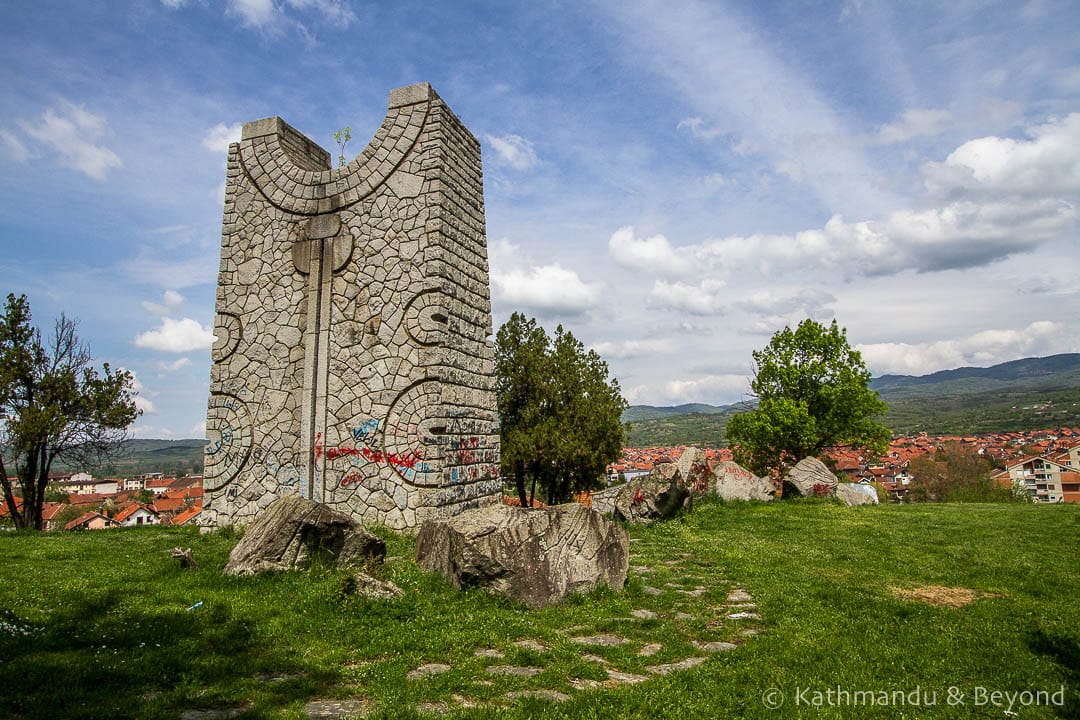
This was followed by a visit to nearby Leskovac to see the Monument to the Revolution, which was completed in 1971 and is dedicated to the 8,000 plus victims who died in this region.
After a break for lunch (the first of many homemade salami sandwiches while sitting in the car on the side of the road) our plan was to head due west to Devil’s Town and from there, the short distance on to the town of Kuršumlija, where we would stay the night. Devil’s Town (or Đavolja Varoš as it is known locally) is a series of unusual rock formations in the south of Serbia. They look impressive in photos and we were looking forward to seeing them. With only 60km to cover, we assumed we would have plenty of time to get there, take a leisurely look around and also get onto Kuršumlija in time to enjoy a couple of pre-dinner beers and record the day’s events – job done.
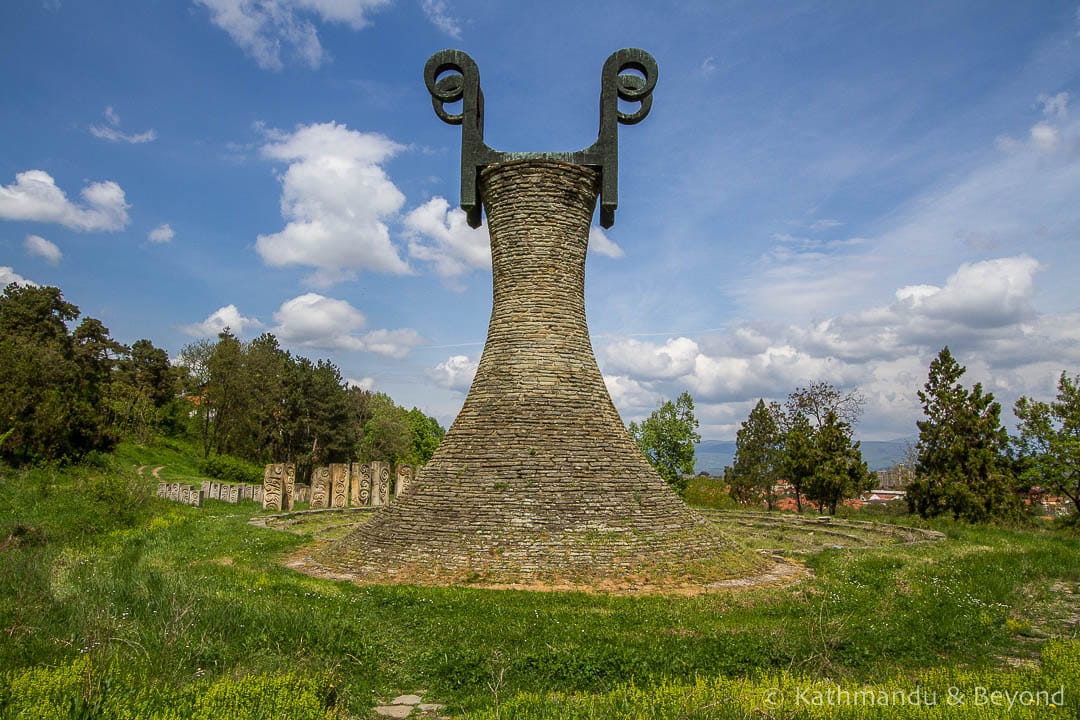
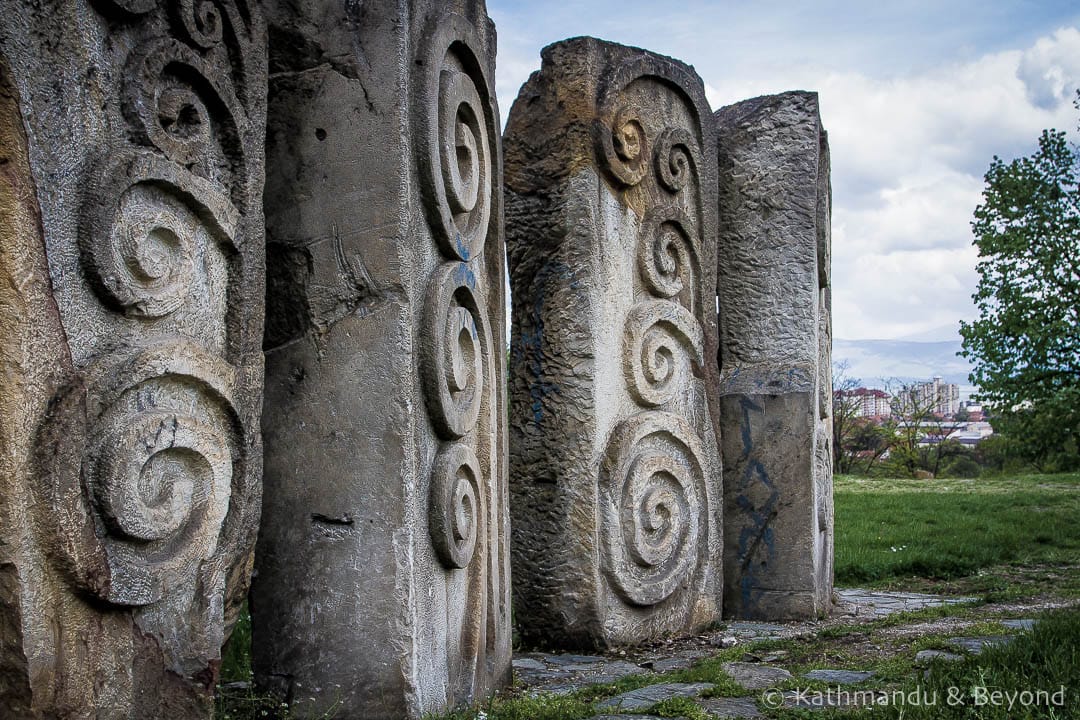
How wrong we were! Several Serbs, when we had spoken to them of our pending road trip, had lamented that the Serbian roads were terrible. We took this information with a pinch of salt. This was Europe after all; how bad could the roads be?
In short, there aren’t enough profanities to describe how crappy this particular road was. In fact, there was no road for a large chunk of the time and it took us five hours to cover 60km, 26 of which took nearly three hours to complete. To say the journey was horrendous would be an understatement. The ‘road’ deteriorated the further we travelled along it and by the time we had worked out how serious the situation was there was no option to turn the car around and go back the way we had come. We saw hardly any other vehicles for the entire time (and those we did see were meaty 4WDs) and to boot, we had no phone signal for almost the whole journey. Kirsty kept this last bit of information to herself. She considered, rightly so, that I was stressed enough with the driving to not want to know that as well. As for the driving, it was a matter of slowly positioning the car over crevasses and potholes the size of the Grand Canyon and easing forward, one very slow kilometre at a time. Kirsty spent a lot of the time out of the car, directing me over the crevasses and potholes and scouting the way ahead.
And all this in a brand new hire car! And before you ask, no, we didn’t take out the fully comprehensive insurance. And yes, before you ask, on reflection it would have been a good idea, although even if we had taken it out, it wouldn’t have covered us for the undercarriage, which was the area of the car we were most worried about damaging.
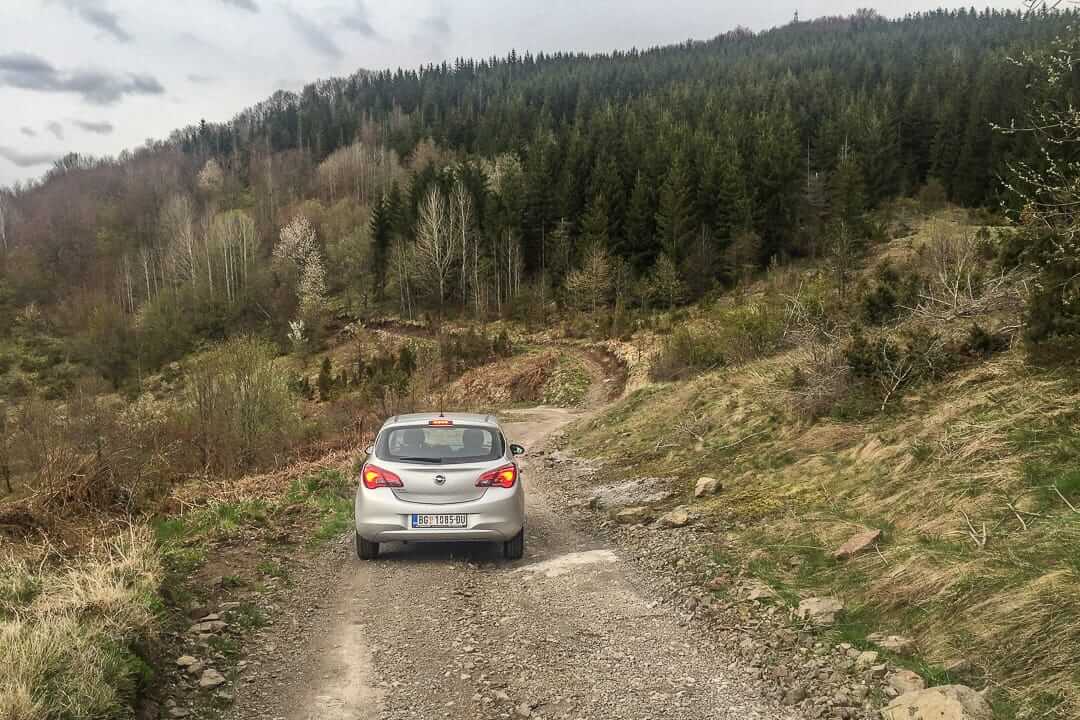
In all honesty, that five hours of hell tarnished the rest of our road trip. We ended up inflicting several scratches down the side of the car as we were forced to drive extremely close to the trees and bushes on more than one occasion. And, as I mentioned above, we were constantly worried about damaging the undercarriage. I grimaced each time the car made that horrible crunchy noise you hear when you drive over the top of something you shouldn’t have. Then there were the other noises (pistons, fans and brakes working overtime) and the what if’s … what if the car broke down, what if we got it stuck in a ditch, what if it rains (luckily it didn’t but it certainly threatened to do so).
The whole experience was horrible, truly horrible. We eventually hit (no pun intended) a decent bit of road and the turning to Devil’s Town – 8km in the opposite direction to Kuršumlija. The road looked just as bad as the one we had just tackled. There was no way we were going to try and get to Devil’s Town. Instead, we headed straight for Kuršumlija, found a hotel, dropped our bags off and went directly to the nearest pub – the first two didn’t touch the sides. With the third pint of lager, I slowed down somewhat and had time to reflect and consider what lucky buggers we had been to get away with this one.
Oh, I forgot to mention. I’d also trodden in dog shit at some point during the day – one of the best days of travel EVER!
PLEASE KEEP READING. I PROMISE THE FOLLOWING DAYS’ DESCRIPTIONS WON’T BE AS LONG OR AS NEGATIVE!
Day 2
Tomorrow, as they say, is another day!
On the second day of our Serbia trip, we woke up to clear blue skies and sunshine. Two friendly Serbs, who remembered passing us on the Road to Hell the day before, were drinking coffee at our hotel. They looked over our proposed route for the day and assured us that all the roads we were planning to use were in good condition. We also checked over the car and apart from the scratches, which we knew about, there didn’t seem to be any other damage. In particular, the undercarriage looked OK (it was muggins here who had to lay down on the filthy road and crawl underneath to check it out), so with both bits of knowledge combined we were more confident to continue (the previous night we had talked about giving up on the trip, taking the car back to Nis and cutting our losses).
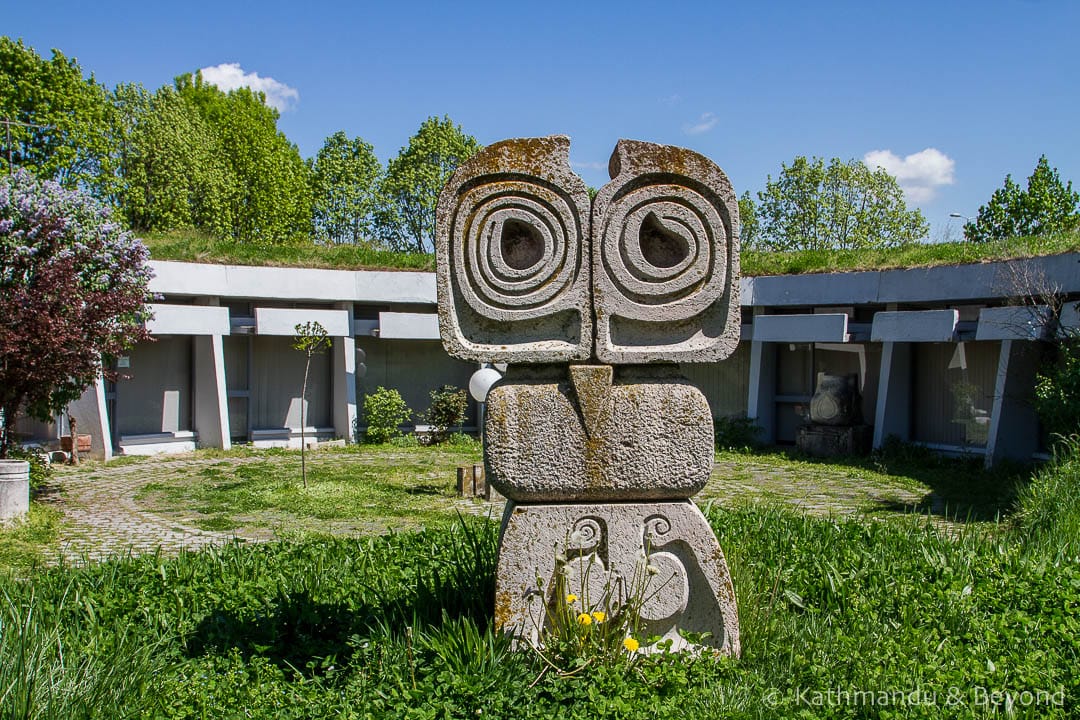
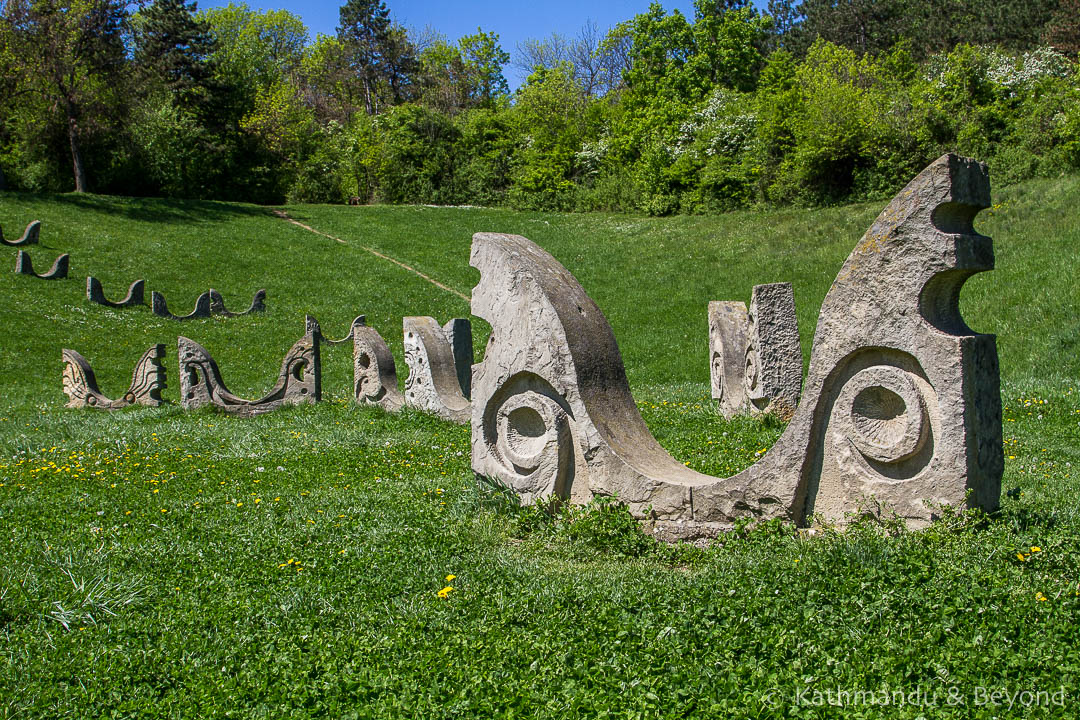
We drove north to Kruševac to see the peaceful Slobodiste Memorial Complex (which commemorates the hundreds of Kruševac citizens and partisans who were executed by the Germans) before continuing to the village of Stulac, where nearby the Mausoleum to the Fallen Insurgents against Fascism (‘The Sniper’) sits atop a local hill. It was in this vicinity that the first heavy-duty confrontation took place between Yugoslav partisans and German forces and it is easy to see why the monument is called ‘The Sniper’.
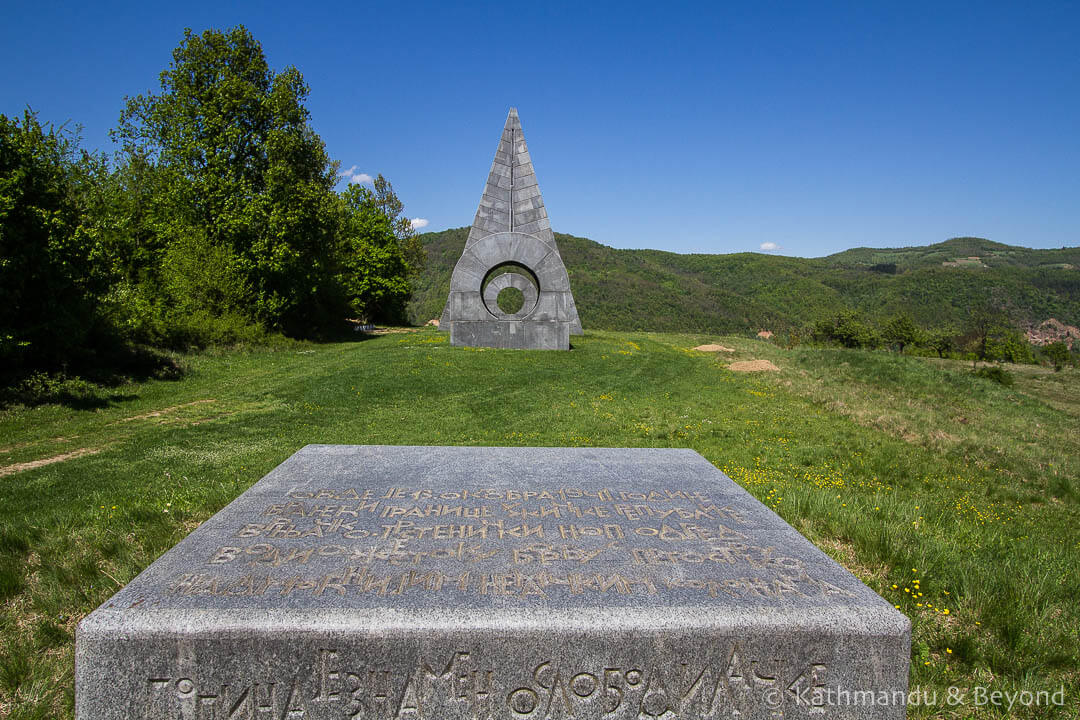
We also saw some nice scenery during the course of the day, driving alongside picturesque Celije Lake for part of the way and passing the medieval fortress at Maglic. We would have loved to have climbed to the top of the fortress but, as was becoming the norm (and we were only on day 2), we were running out of time. We wanted to get to the UNESCO-listed Studencia Monastery before it closed and then push on to Novi Pazar, where we would sleep the night.
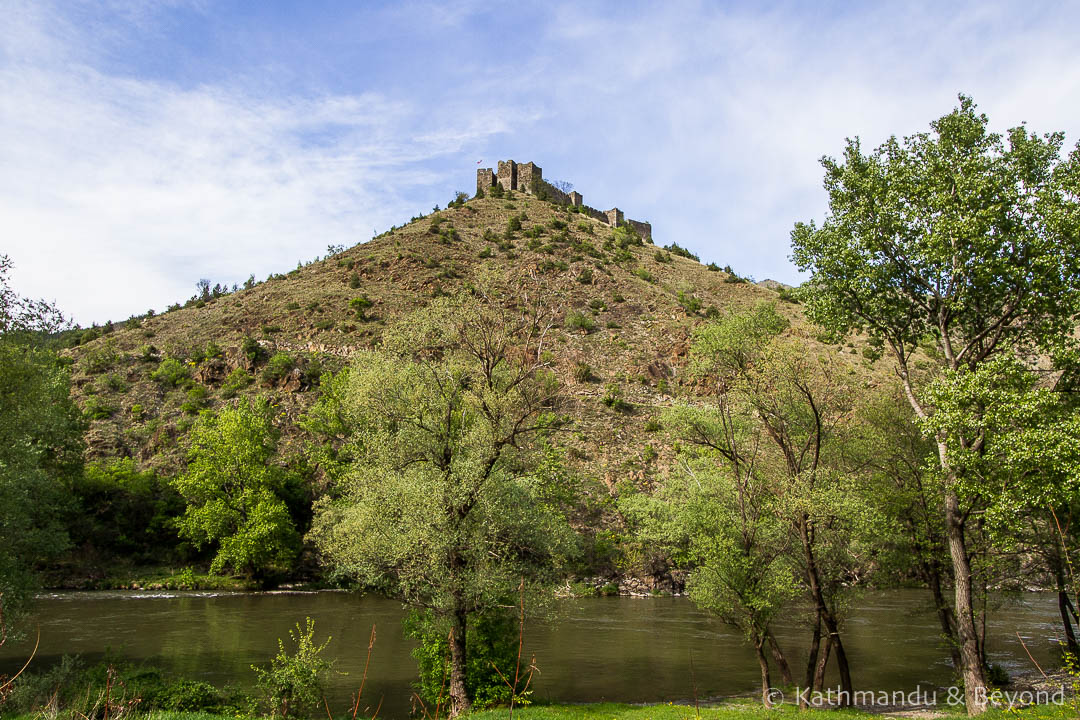
The weather had been great all day until we reached Studencia, where it started to rain. We didn’t think much of it as the area surrounding the monastery is a biosphere and the rain soon gave way to sunshine before turning back to rain again. However, by the time we had reached Novi Pazar, it was pissing down and was showing no signs of abating.
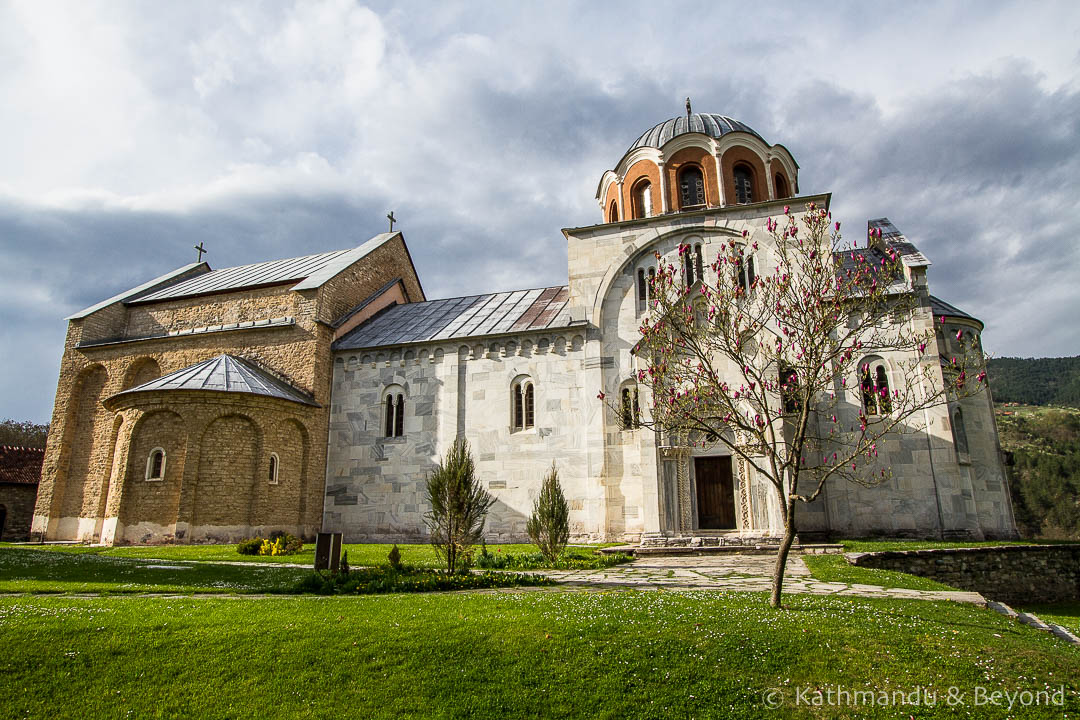
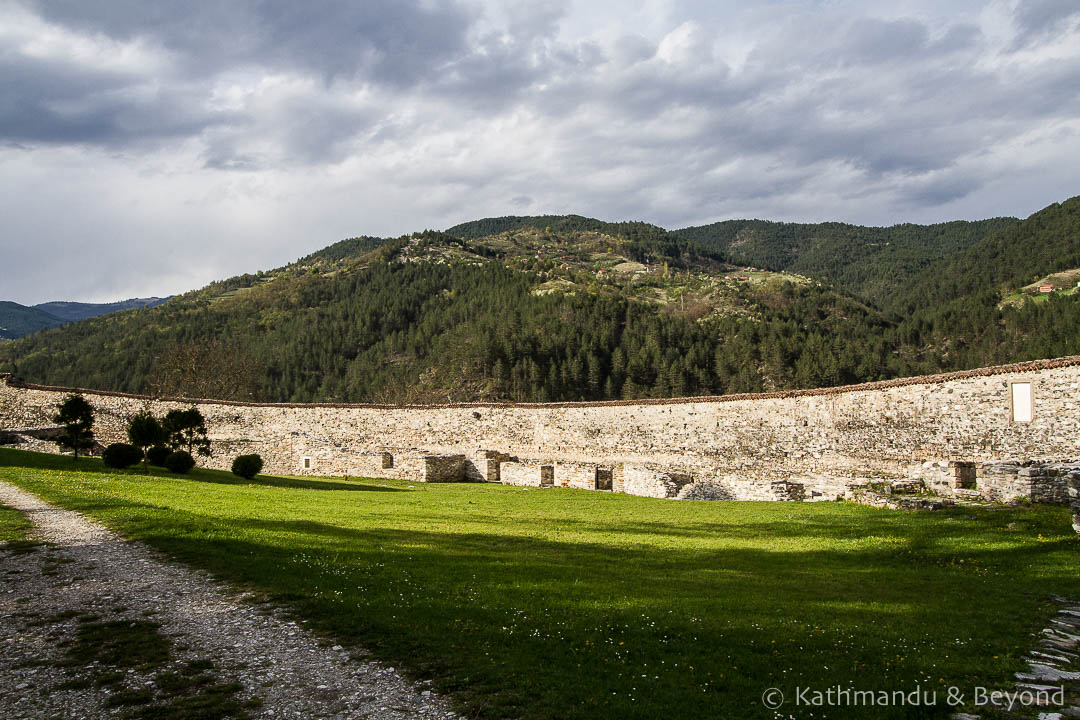
That evening we stayed in the most retro/bizarre/ugly concrete monstrosity of a hotel we have ever seen. Dominating the centre of town, the Hotel Vrbak cost more than our usual nightly budget but it was well worth the expense.
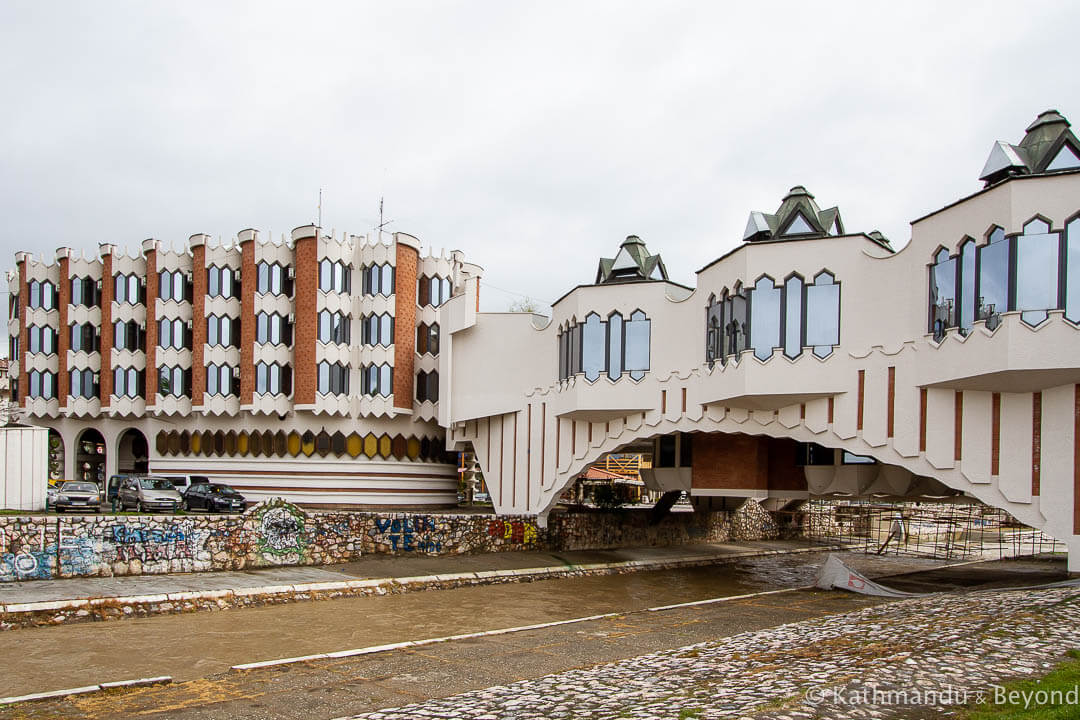
Day 3
It was still raining when we woke up. We walked around the town (in the rain), drove out to the Church of St Peter, the oldest church in Serbia (in the rain) and also made the journey out to Sopoćani, where we saw our second Serbian UNESCO-listed monastery in so many days. Oh, I forgot to mention, we also did that in the rain!
The monastery is reasonably high up and by the time we left (about half an hour or so after we arrived), the rain had turned to sleet and within an hour of getting on the main road to Zlatibor the surrounding countryside was a blanket of snow.
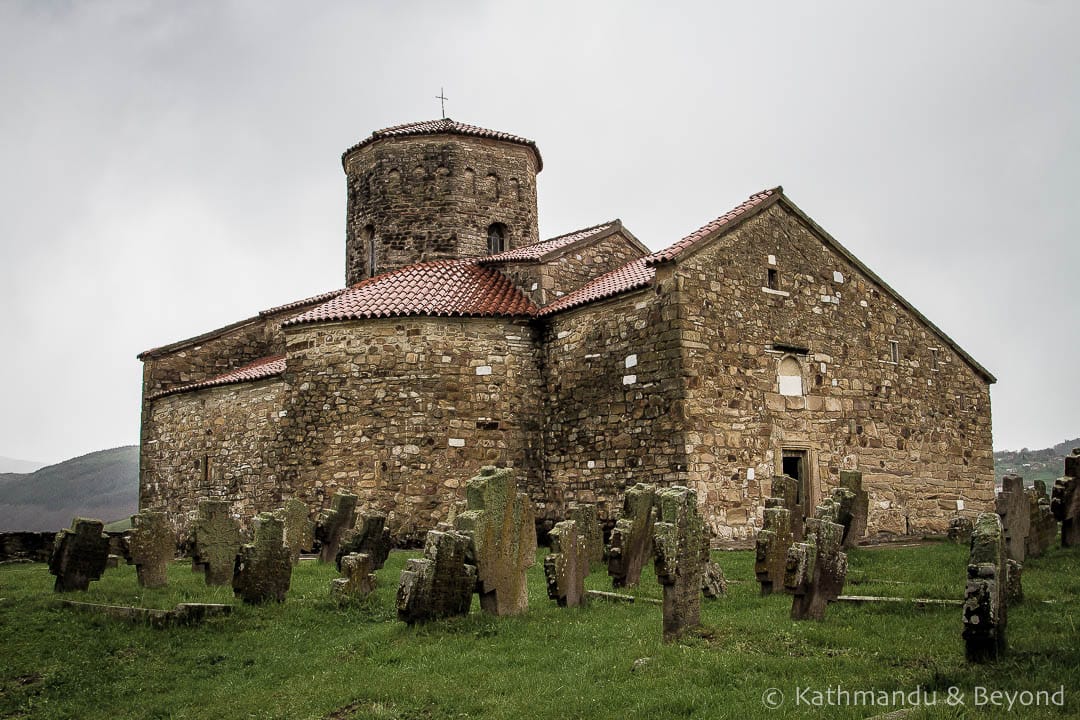
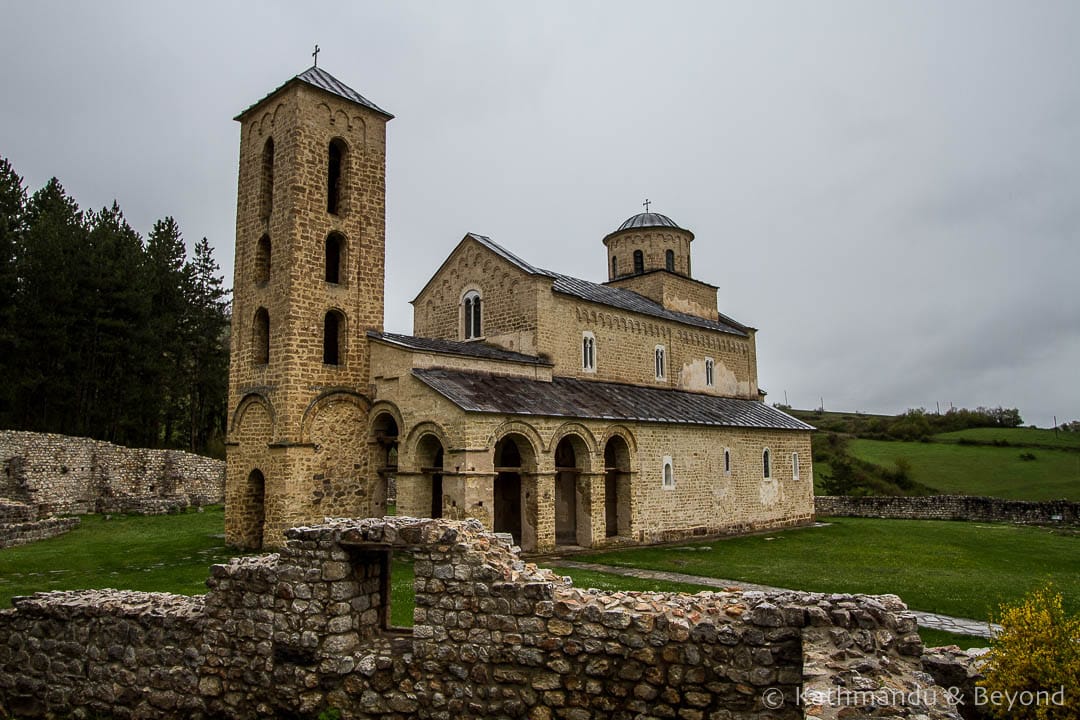
The snow kept getting heavier and we were worried we’d get into trouble (again!) but miraculously, notwithstanding deep snow by the roadside, the roads themselves remained clear despite there being little traffic on them. Once we realised we weren’t in for another nightmare journey, we began to enjoy the drive, stopping to take photos and enjoy the scenery along the way.
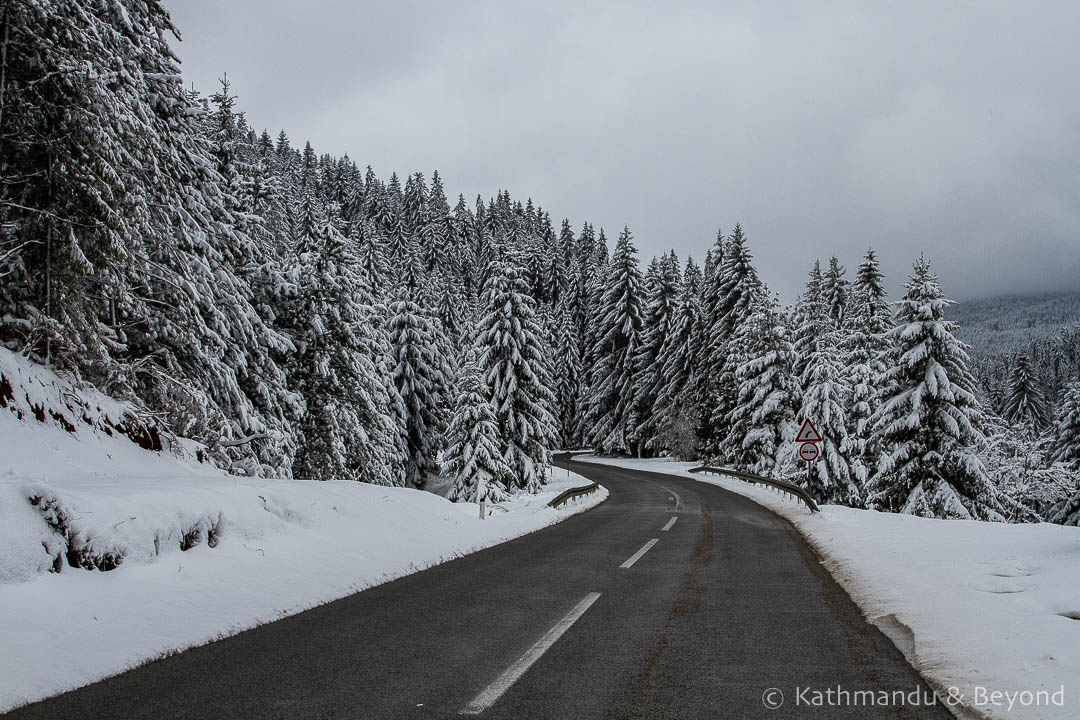
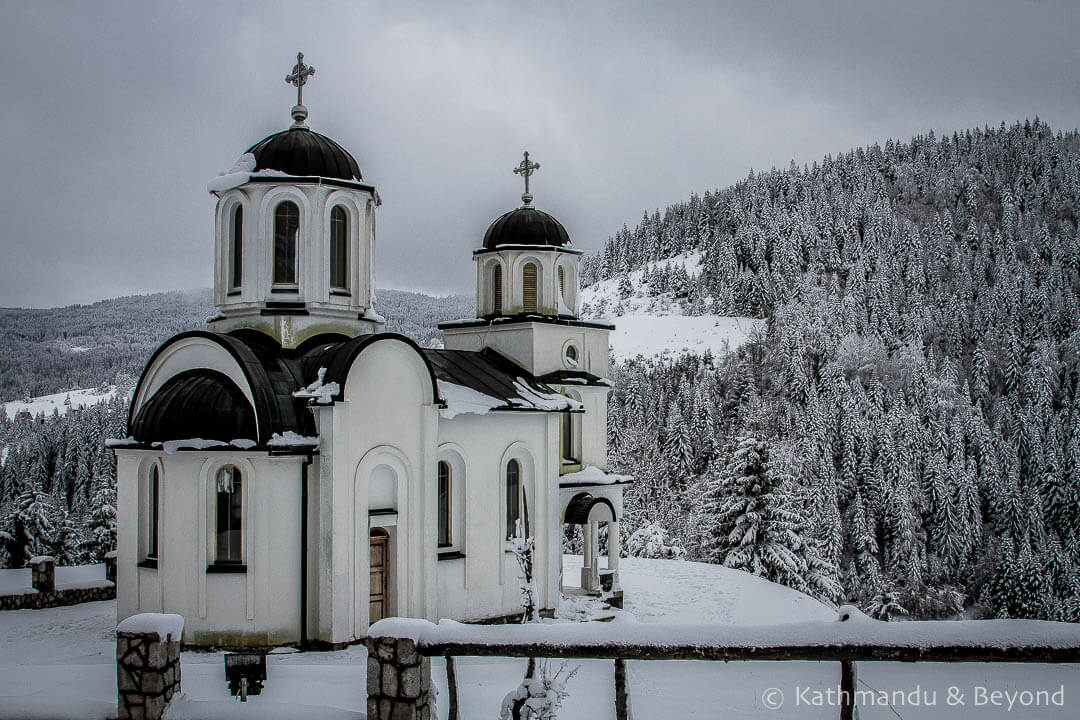
We arrived in Zlatibor and checked into our very cosy apartment. We had already decided to have a day off the driving the following day, so we walked down to the local supermarket, got some supplies and headed back for a night in front of the telly and bit of a sleep-in the following morning. The car was already covered in snow when we returned from the shops – we were pretty happy we weren’t going anywhere!
Day 4
We had been to Zlatibor before, on a previous trip around the Balkans. Our intention back then was to travel on the Sargan Eight narrow-gauge railway, which departs from Mokra Gora station, some 38km west of Zlatibor and close to the border with Bosnia & Hercegovina. It was the height of summer last time we attempted to do the journey and all the tickets were sold out. This time around we weren’t expecting any such issues but when we contacted them, we were told there were no available tickets once again. Bummer we thought, but what can you do? We went out for a walk in the town. It was freezing cold and we didn’t stay out for long but we went to the very friendly Tourist Information Centre and asked them about the railway. They said it was always booked out months in advance but that cancellations sometimes occurred. They made a call on our behalf and we were in luck, the snow must have put some people off and two tickets were now being held for us for the following day.
We didn’t do much for the rest of the day but I did brave the elements and walk up Sumatno Hill to see the local spomenik, which honours partisans who, although they were wounded, were put to death by German soldiers after a battle at nearby Uzice.
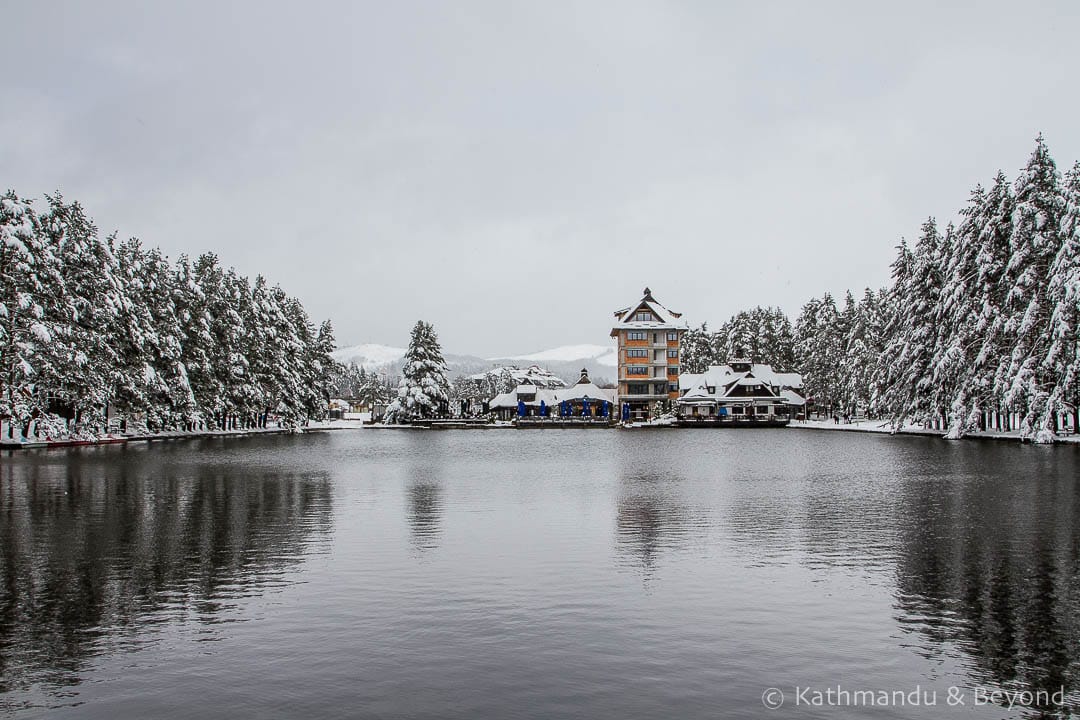
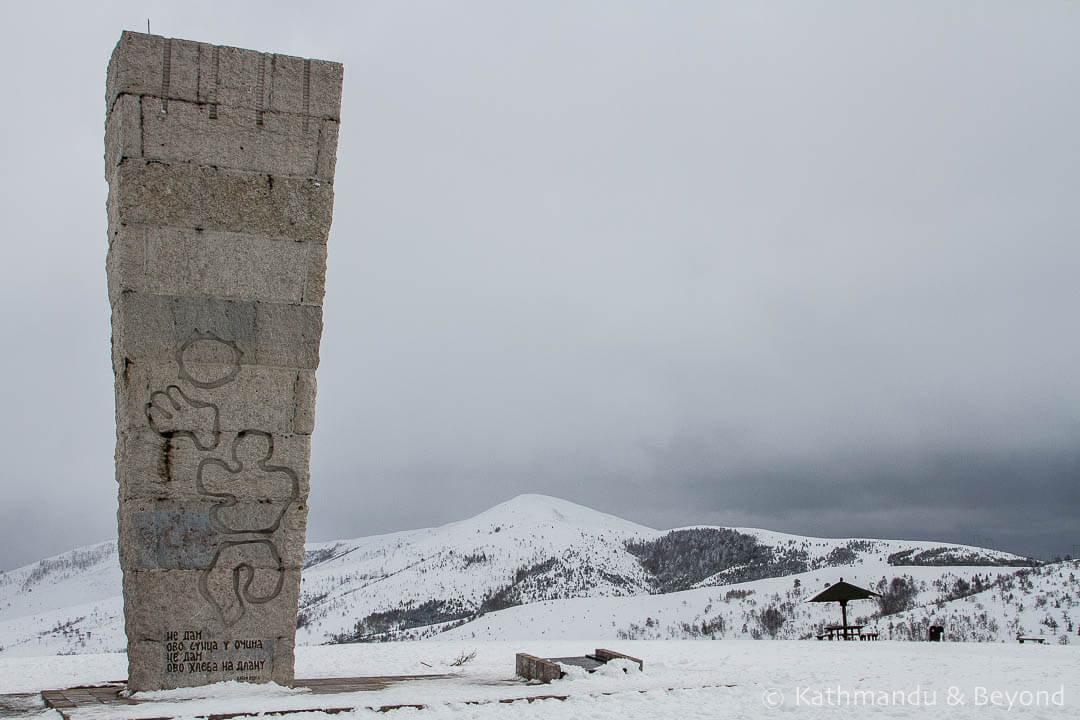
Day 5
After digging the car out of the snow, we arrived at Mokra Gora station with plenty of time to spare for the 1030am departure. This was a bad idea as we just got really cold hanging around on the platform and although the train had a heater on it, we remained in a state of semi-frozenness for the entire journey of about an hour in each direction. It would have been a great train ride if the weather had played ball but, as it was, we were reluctant to even get off the train during its frequent photo stops and the time I spent hanging out of the train taking photos (something I normally enjoy doing) was measured in seconds rather than the usual several minutes!
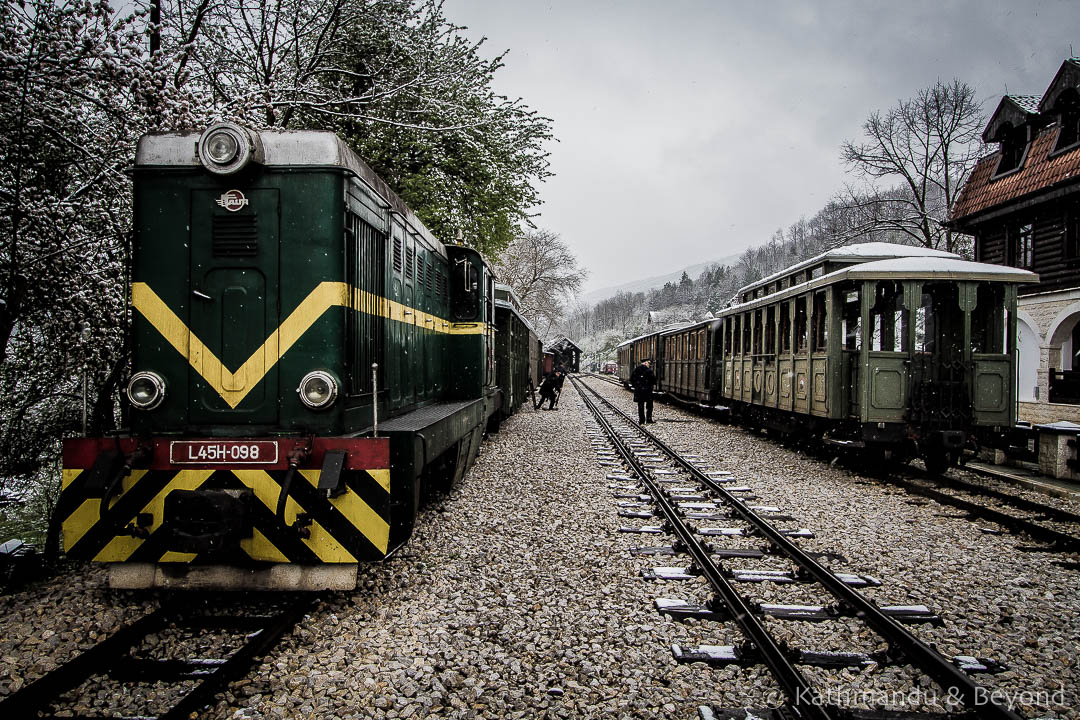
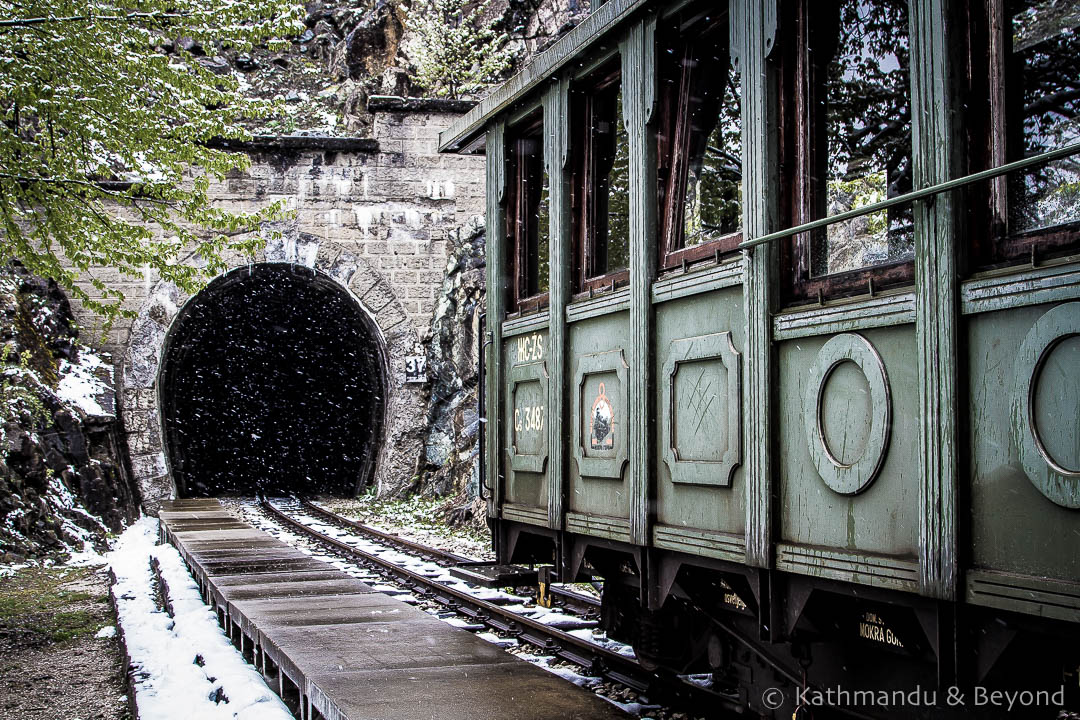
Frozen to the core, we returned to the car around midday and drove to Užice. From there we wound our way up mountain roads until we reached the Kadinjaca Memorial Complex. One of the most important (and impressive) spomeniks in the country, it commemorates partisan fighters who fought bravely against a more superior German army in November 1941. We ploughed through ankle-to-knee deep snow and saw what we could before the bitter cold got the better of us. We headed back to the Visitor’s Centre, where the guy in charge told us we were the first people to visit the memorial that day (it was around 3pm). He also showed us photos of the site on his phone, which he had taken two days before in glorious sunshine. As Kirsty pointed out, we thought we were in Serbia, not Siberia!!
By the time we reach Cacak in central Serbia, the snow had disappeared and we rounded off a rather chilly day with a couple of chilly beers and chilli pizza (boom, boom!).
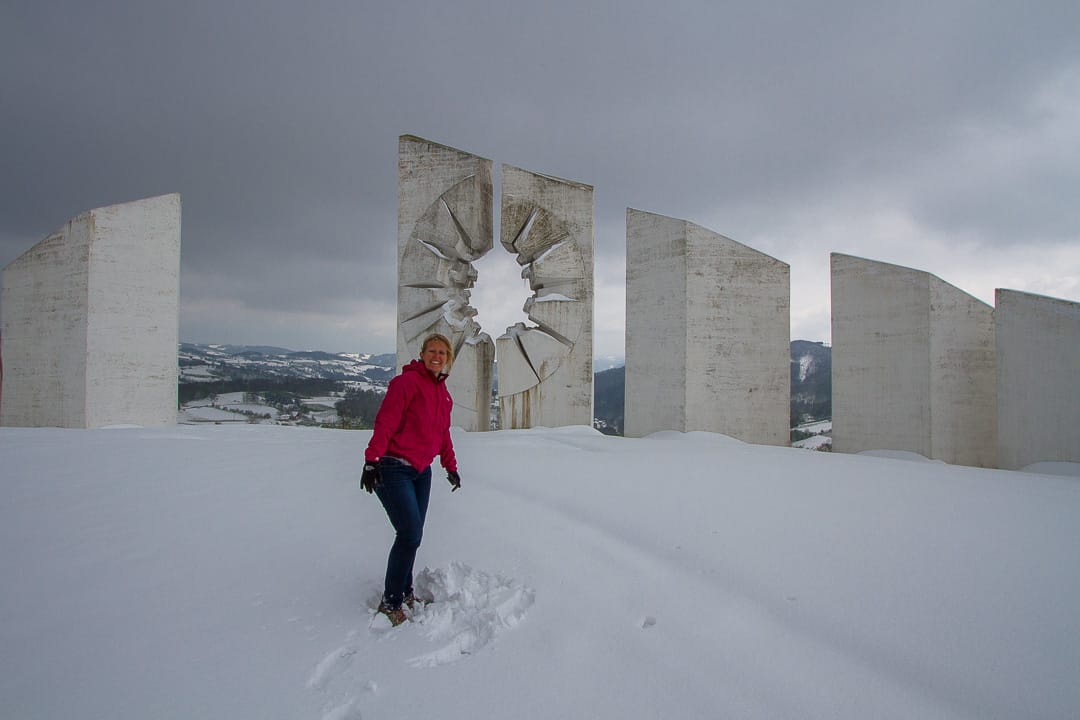
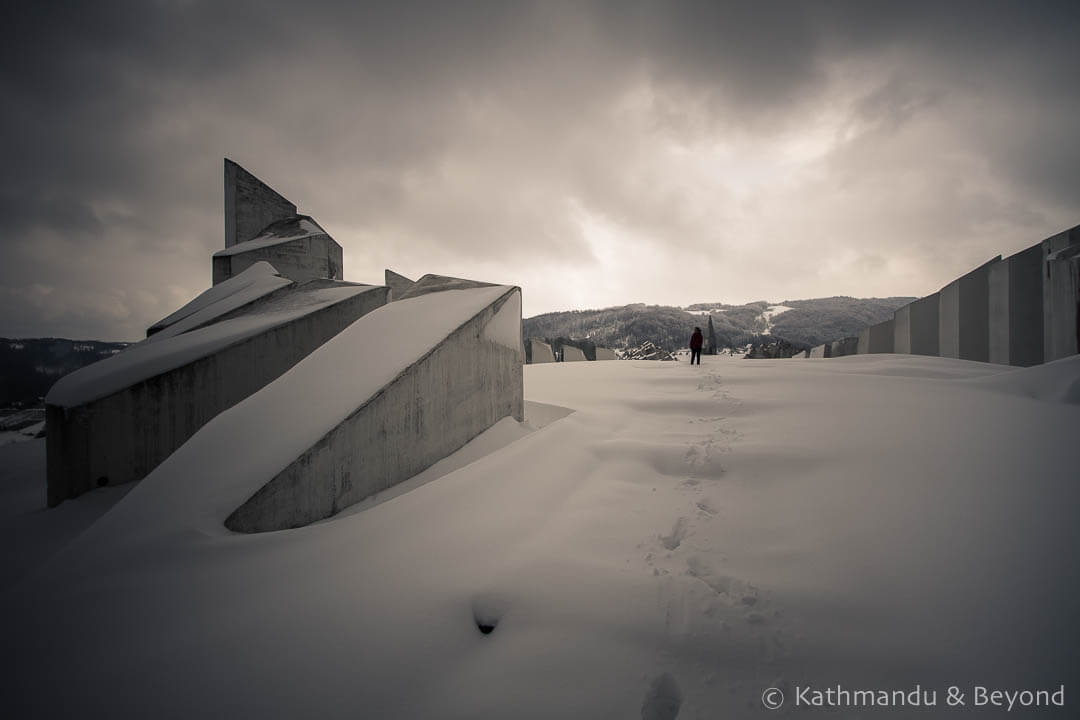
Day 6
We began the day with coffee and burek (baked filled pastries), working out that we were only 65km from where we started on day 1 as we pored over our map. We then headed to the outskirts of town to see the Mausoleum of Struggle and Victory, a strange-looking spomenik that commemorates both fighters and civilians who died during the liberation of the city. It was covered in graffiti but the detailed relief on the monument itself was interesting and apparently harks back to the pre-human time in the Cacak region. We both liked this one, plus the sun was shining once more so we were in a happy mood as we headed for the tiny village of Ostra, 20km to the east of Cacak.
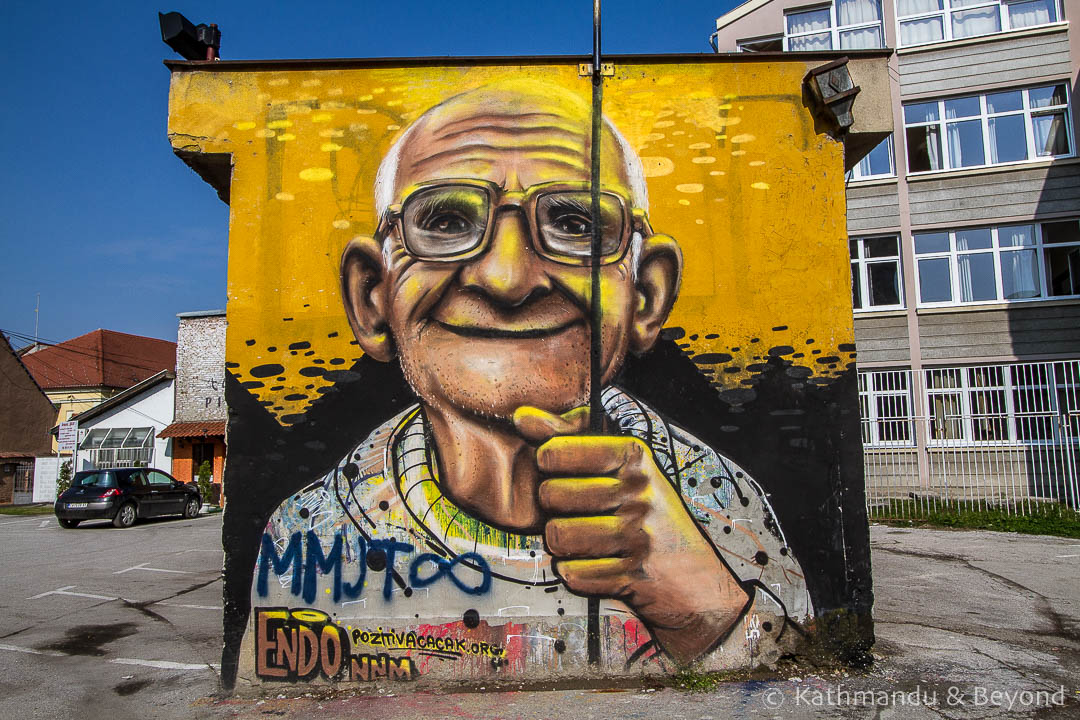
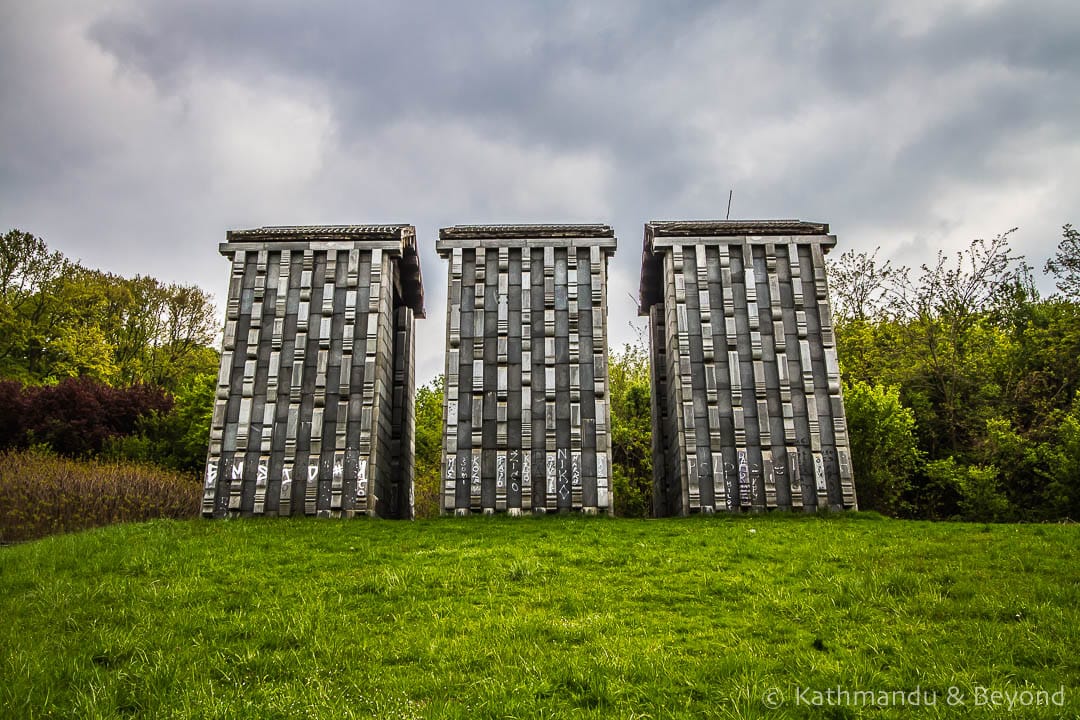
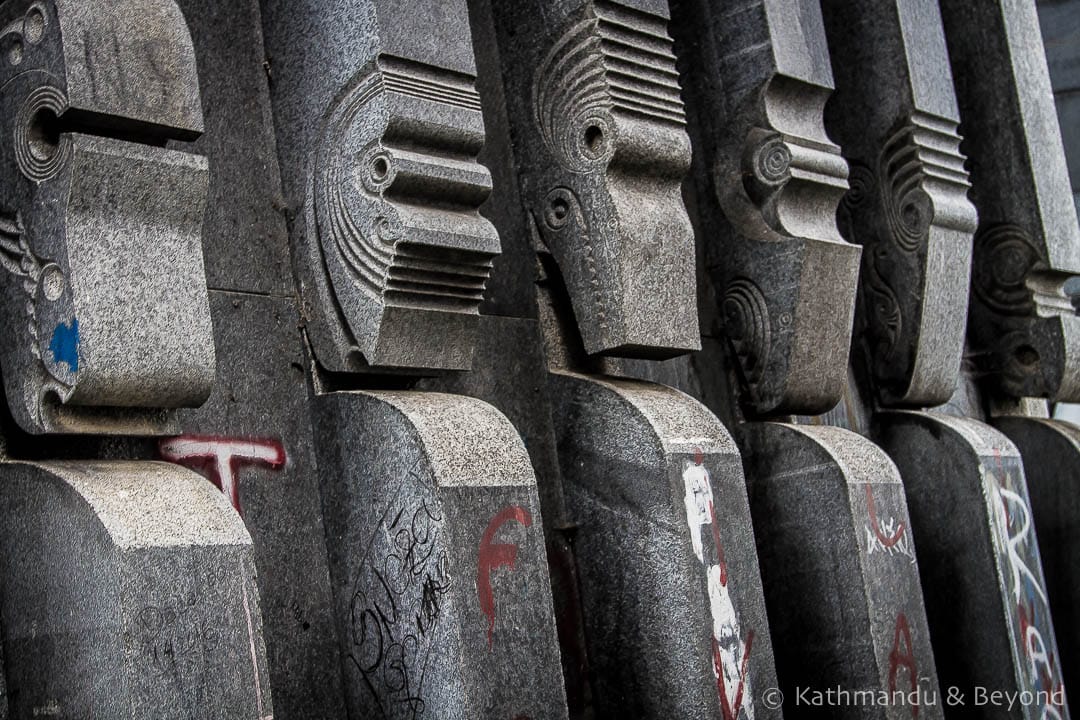
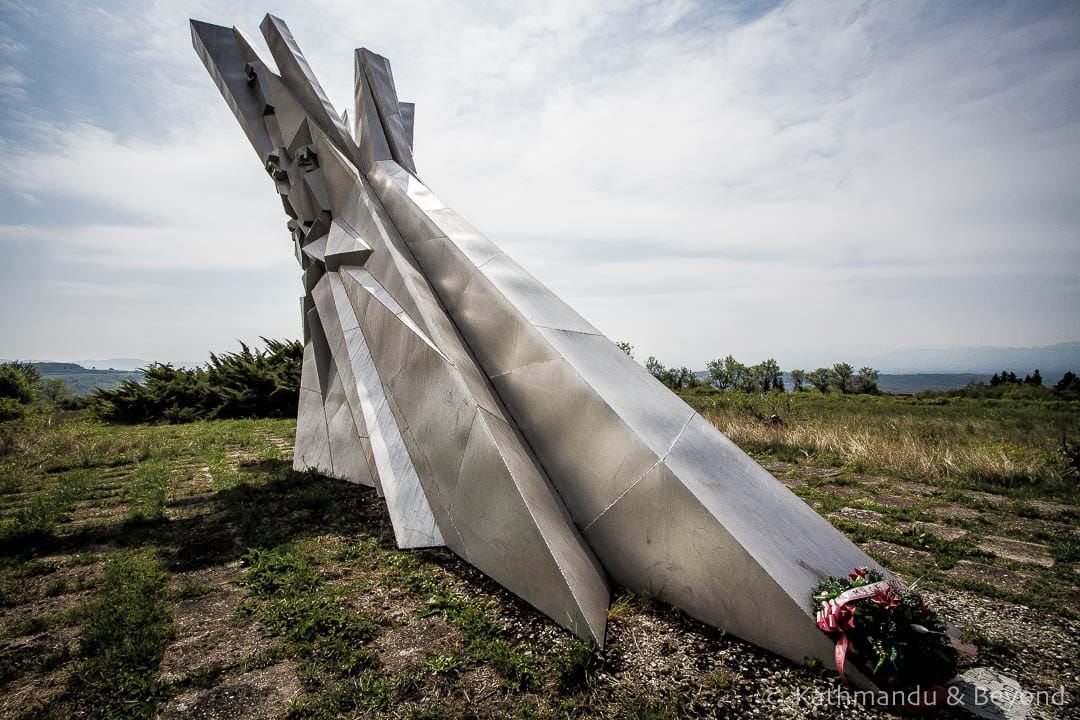
Today turned out to be our best sopmenik-hunting day. Courage – A Monument to the Fallen Soldiers of the Cacak Partisan Detachment on the outskirts of Ostra turned out to be another photogenic monument, and after our visit, we drove to Sumarice Memorial Park in the city of Kragujevac.
As with many of the spomeniks that we visited on the trip, we didn’t really know what to expect until we actually arrived. We were thrilled, therefore, when we discovered that Sumarice Memorial Park comprised of no less than ten monuments and a museum which were all linked via a 7km drivable circuit. Not forgetting the reason for the memorial park in the first place (it was the site of the Kragujevac massacre in which German forces murdered an estimated 3,000 men and boys of mostly Serb descent in one single day (21st October 1941)) we subdued our excitement at having found so many spomeniks in the one location and spent the rest of the afternoon visiting them all.
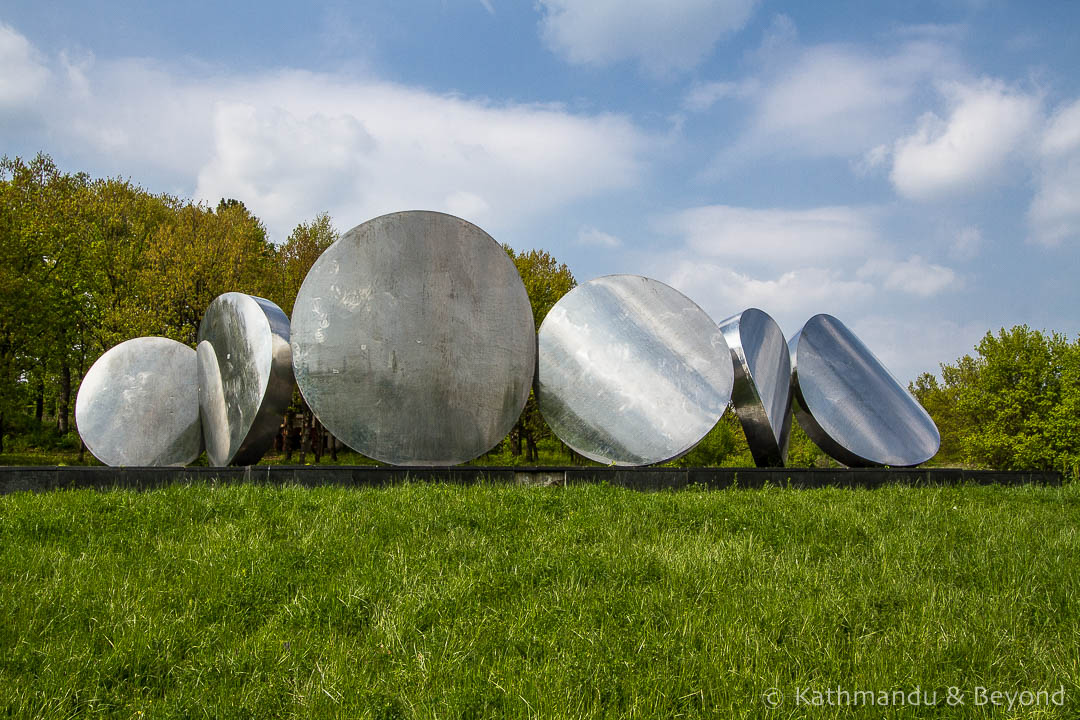
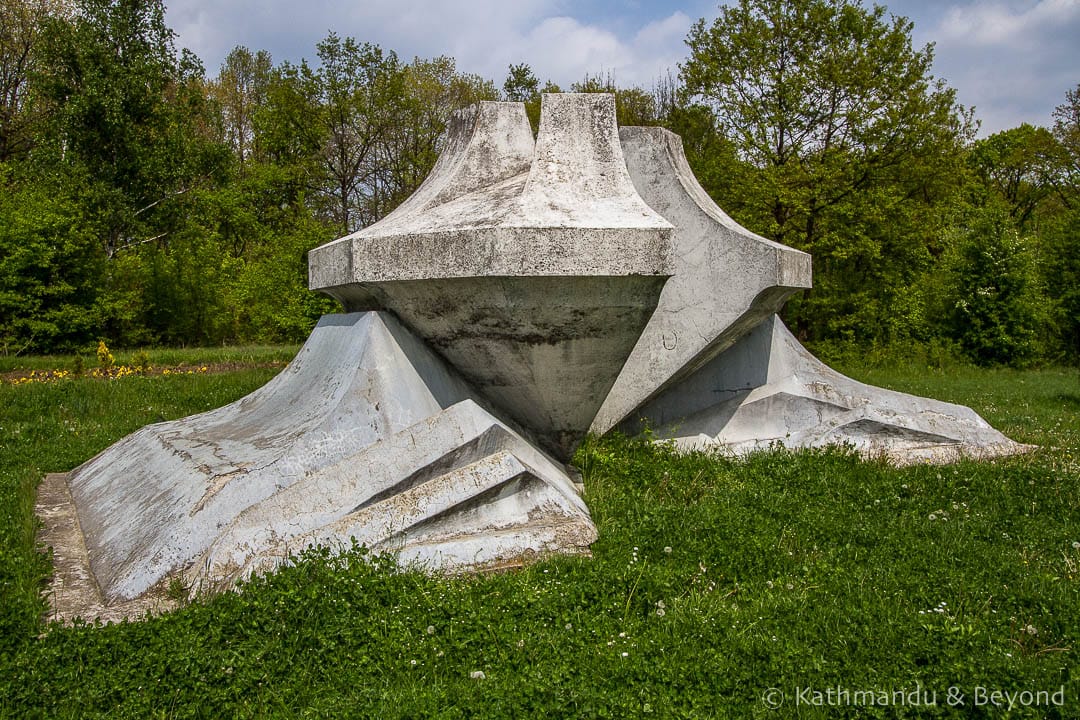
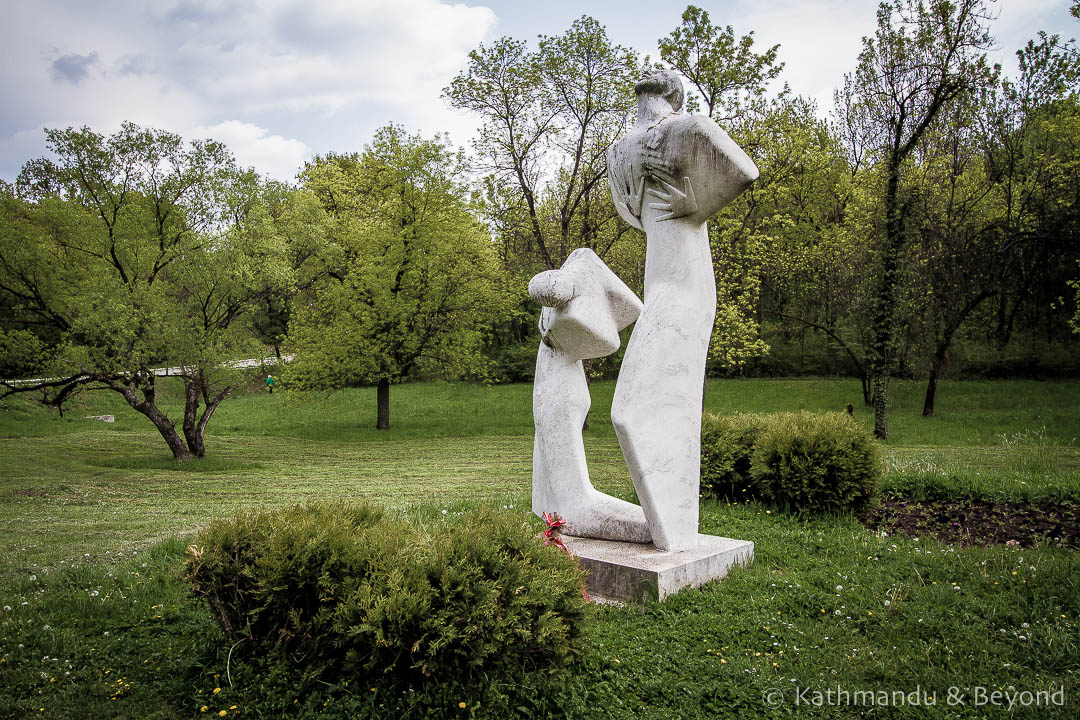
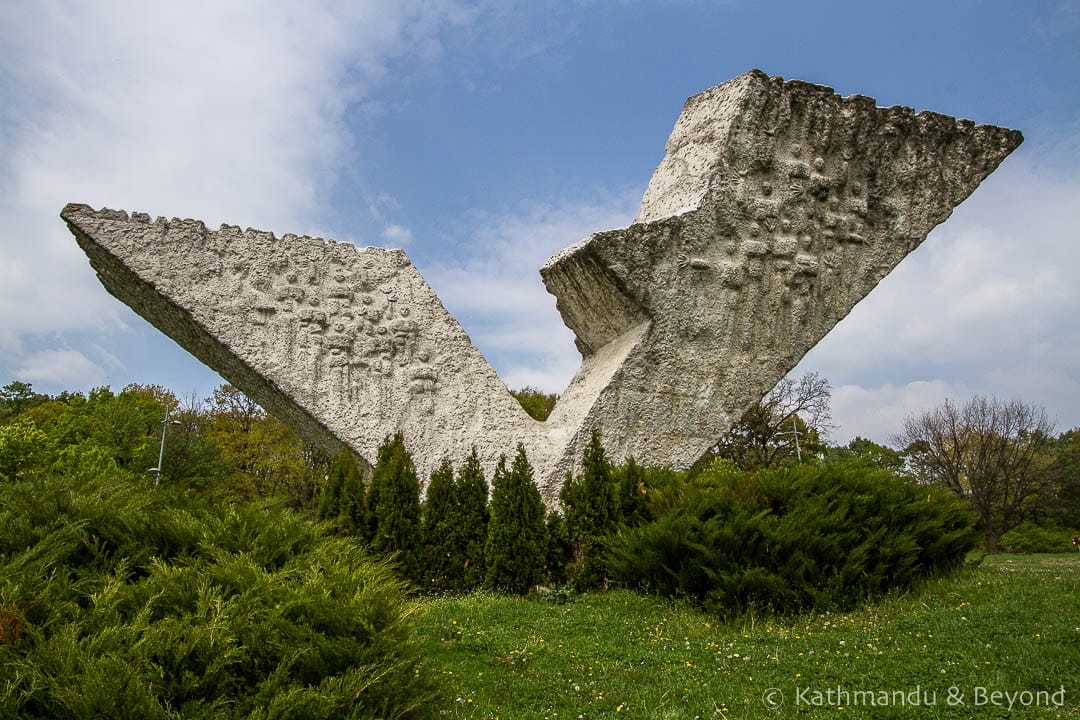
We spent the night in a roadside motel on the outskirts of Topola and enjoyed a fantastic evening meal of Ćevapi (traditional sausage-shaped minced meat patties), washed down with a couple of pints of beer.
Day 7
We had got the rain back by the time we awoke. It was hacking it down as we walked around the grounds of Oplenac (St George’s Church), which is the mausoleum and resting place of the last Serbian and Yugoslav royal family. The inside was far more impressive than the exterior – 3,500 square metres of mosaics in 15,000 shades, made from 40 million pieces of tile – not a bad effort and the curator was a fascinating lady who clearly knew her stuff and enlightened us on a different aspect of Serbian history.
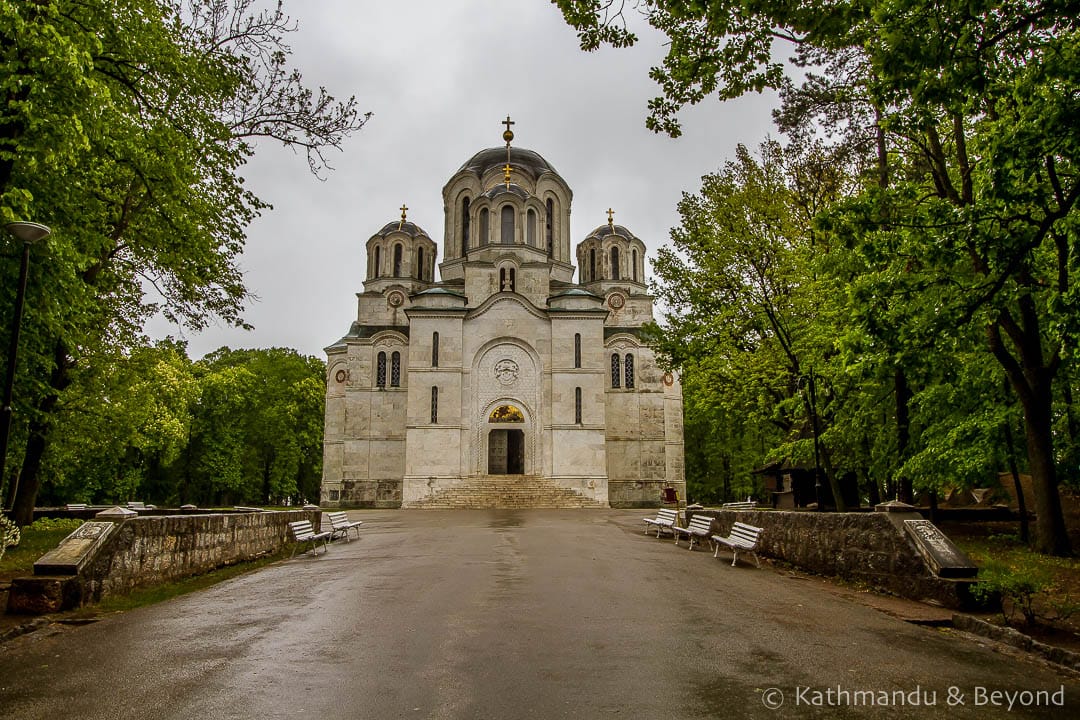
Our spomenik highlight of the day was the other-worldly Monument to the Fallen Soldiers of the Kosmaj Partisan Detachment on Kosmaj Mountain. We were looking forward to this one but had to spend at least 40 minutes sitting in the car waiting for the fog to abate somewhat. The photo below was the best we got weather-wise and eventually, we descended down the mountain and made our way to Mount Avala on the outskirts of Belgrade. Made of black granite, the Monument to the Unknown Hero actually commemorates World War I and was constructed between 1934 and 1938 and therefore isn’t a spomenik but it was worth visiting and the views out over Belgrade were pretty impressive. On the way back down the mountain, we stopped off at the Avala TV Tower and then began our journey east towards the River Danube.
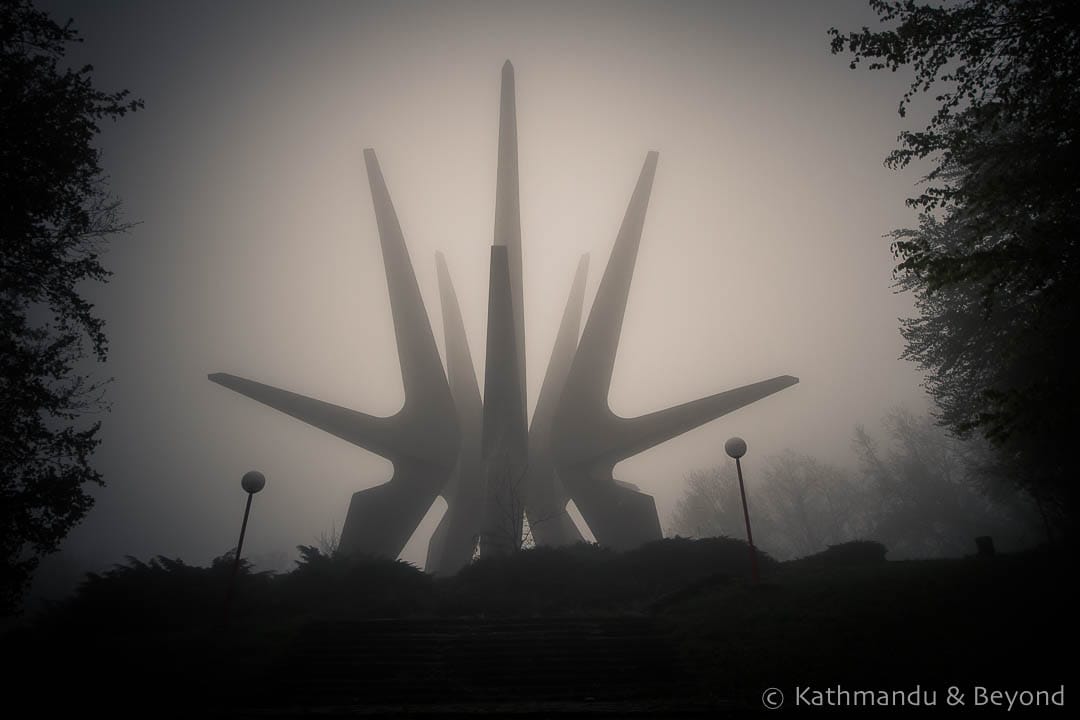
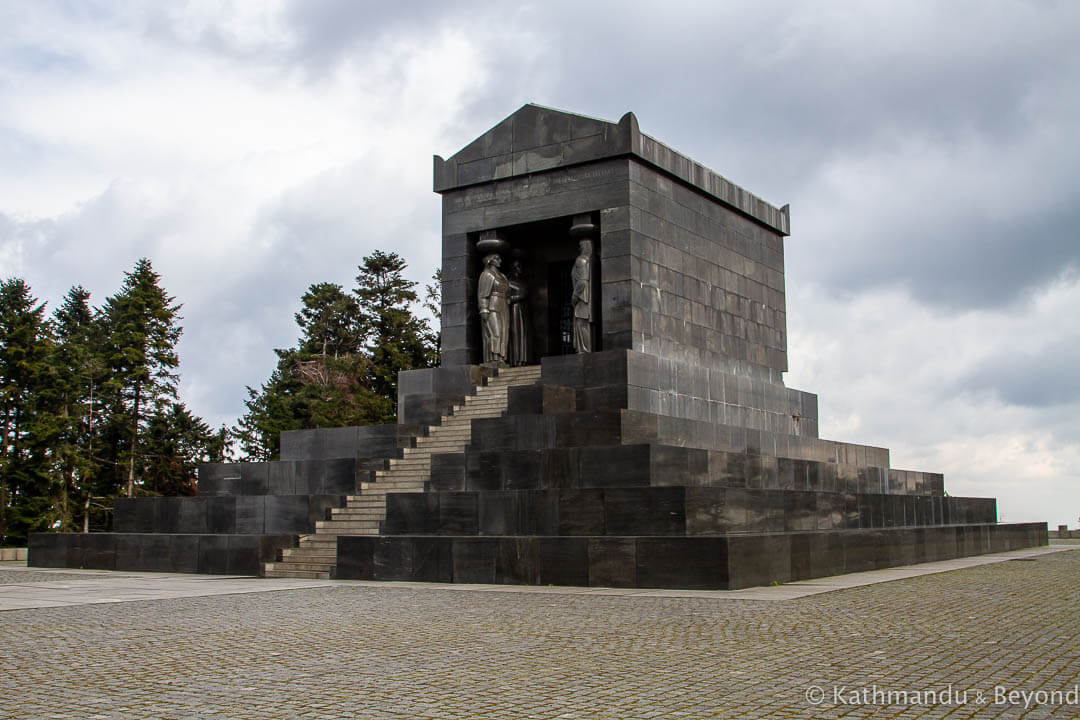
We skirted across country towards Smederevo where we were hoping to spot the fortress and spend the night. The rain was back big-style and catching a glimpse of the fortress was just about all we managed. As for the online booking we had made at a small apartment on the outskirts of town, that never materialised and there literally wasn’t anyone home at the next hotel we tried to check into although it was all open and the lights were on. To cut a long story short, we drove to the next town, Pozarevac, and found a place to stay there.
Day 8
The sun was out again today (the weather is bloody fickle in Serbia!) and we spent the entire day following the course of the Danube. It was a superb day of driving. The road was in excellent condition and we saw castles and gorges plus we had great views of Romania along the entire route. It was every inch how we imagined the Danube to be and we enjoyed the day immensely. We made a couple of detours along the way. They were mostly to get an elevated view of the river but we also headed inland to the town of Majdanpek to see our penultimate spomenik of the trip, the Monument to the National Liberation War. It added about 1½ to 2 hours to our travelling time but it was worth it for the journey there and back, which took us up pretty winding roads and through some attractive countryside covered in forest.
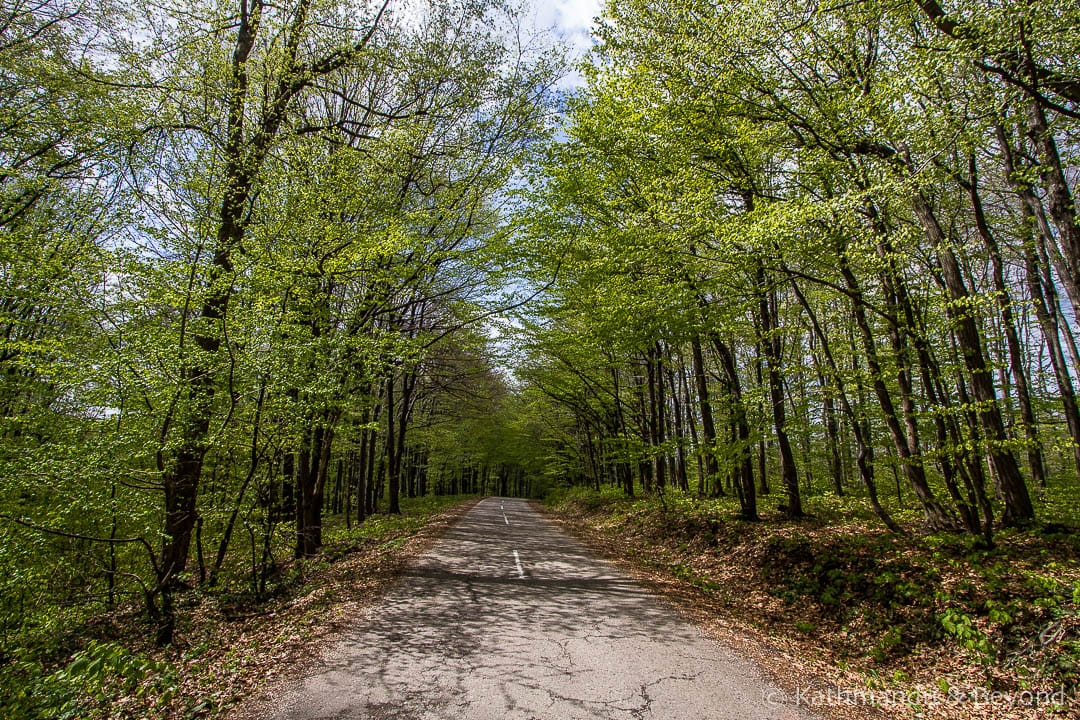
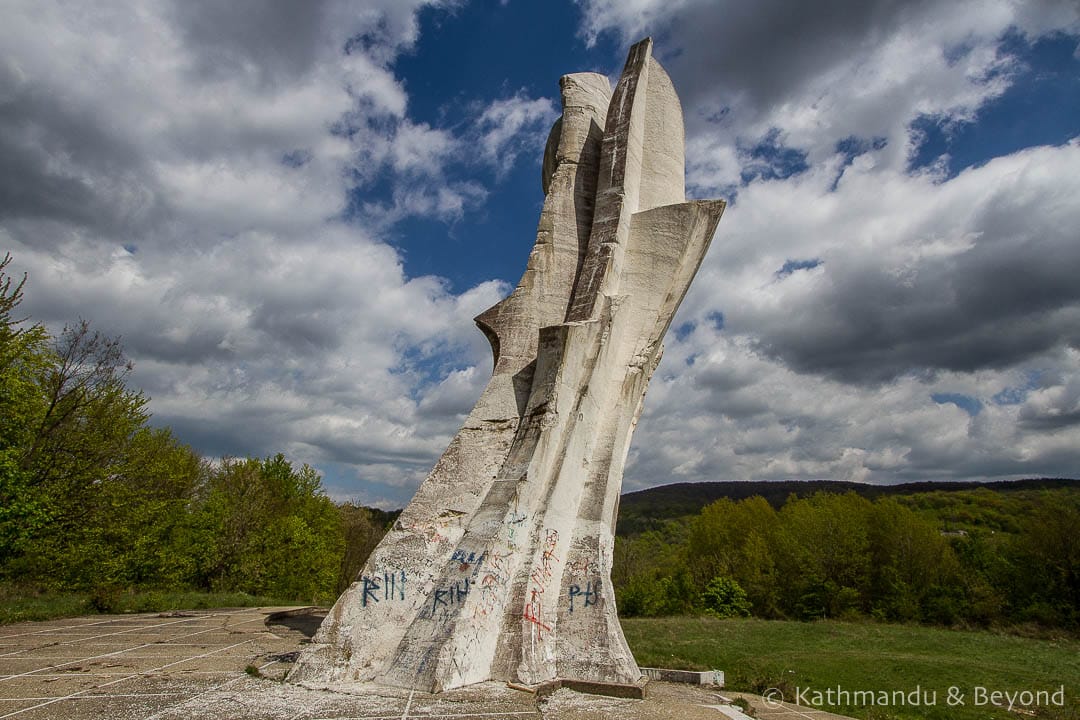
Back on the Danube, we made one final detour before heading to Negotin, where we intended to spend the night. We wanted to get to the top of Miroč, a peak in Đerdap National Park from where you can get a classic view of the Danube below. We found the turning, just beyond Donji Milanovac, and stopped to assess our options. We had been nervous about going off-piste for the rest of the trip since the nastiness on the first day but when we saw a public bus heading up the narrow road, we assumed it would be no problem for us either. All started well, the road was as smooth as a baby’s bottom but all of a sudden we came across dirty great big potholes that we didn’t like the look of one little bit. Of course the bus, which we had caught up with and were following, just ploughed across them but we had to take it far more gingerly.
The potholes got worse the more we progressed. ‘Bugger, bugger, shit, shit’, we thought, ‘not again’ but eventually we saw some workmen who were working on filling in the holes and soon after we reached the small village at the top of the hill. For the life of us, however, we couldn’t find the viewpoint we were looking for and we eventually gave up and continued to Negotin, stopping for a couple of photo opps of the impressive Iron Gate Gorge along the way.
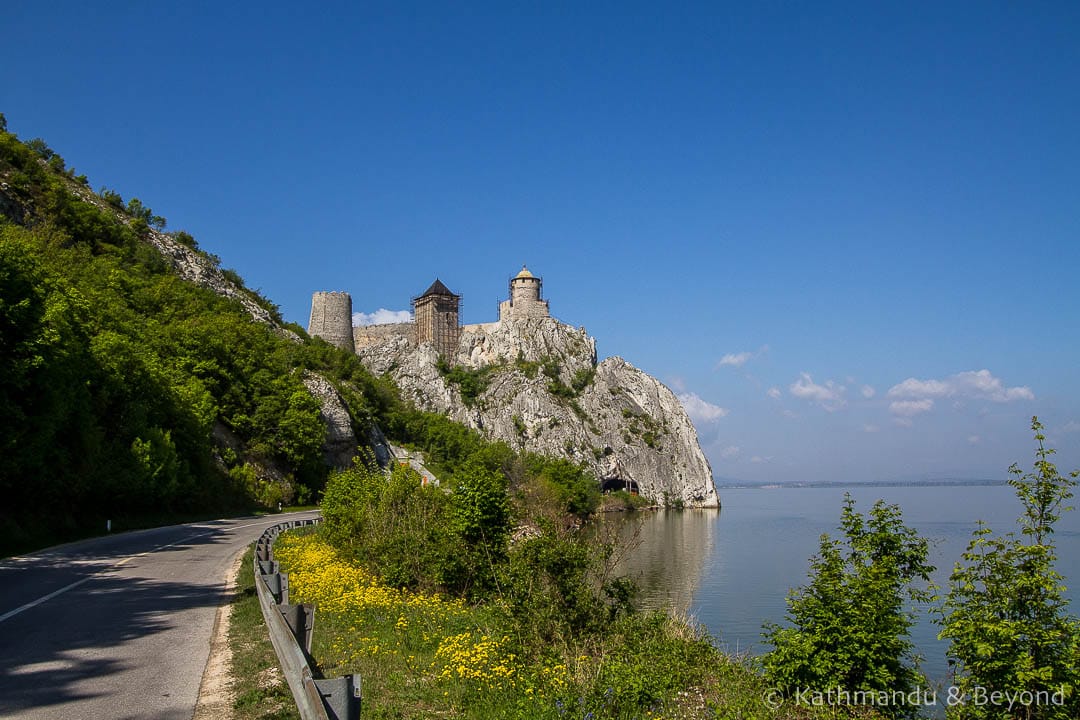
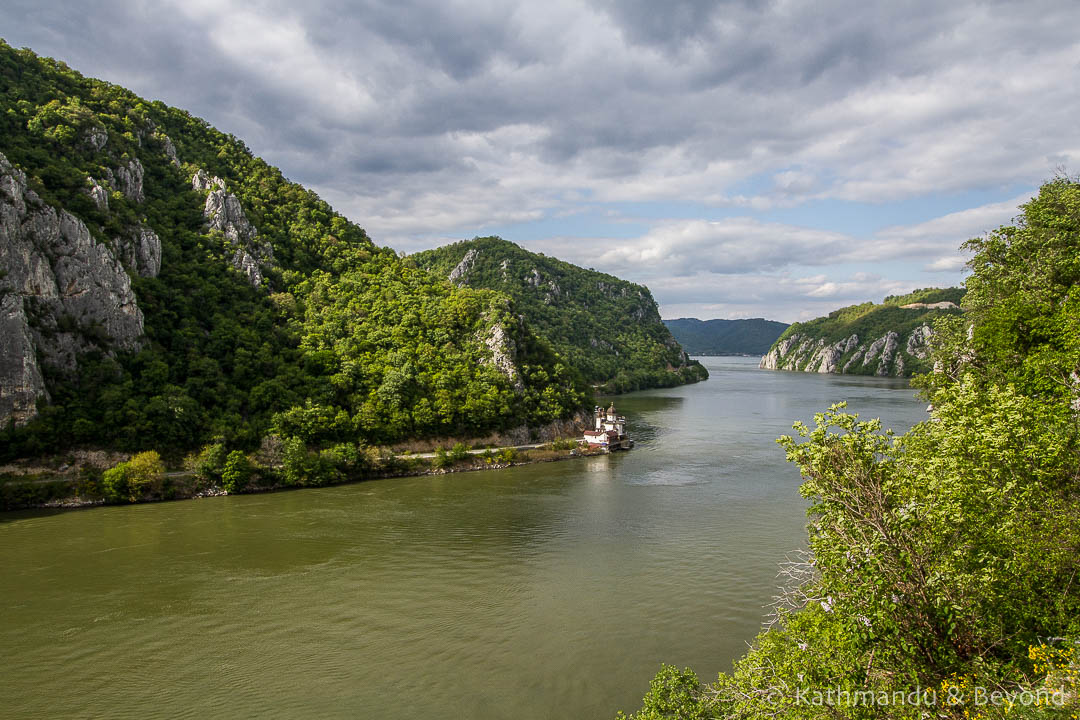
Day 9
Although we didn’t need to hand the car back until 10am the following morning, we decided we would reach Nis and spend our last night there. We saw our final spomenik in Zajecar, the neglected Monument to the Fallen in the Liberation War and the Victims of Fascist Terror. We then journeyed to nearby Gamzigrad, where we visited the impressive Palace of Galerius, a Roman archaeological site with UNESCO World Heritage status.
Our final stop on this trip to Serbia was the agreeable riverside town of Knjazevac before arriving back in Nis in the late afternoon.
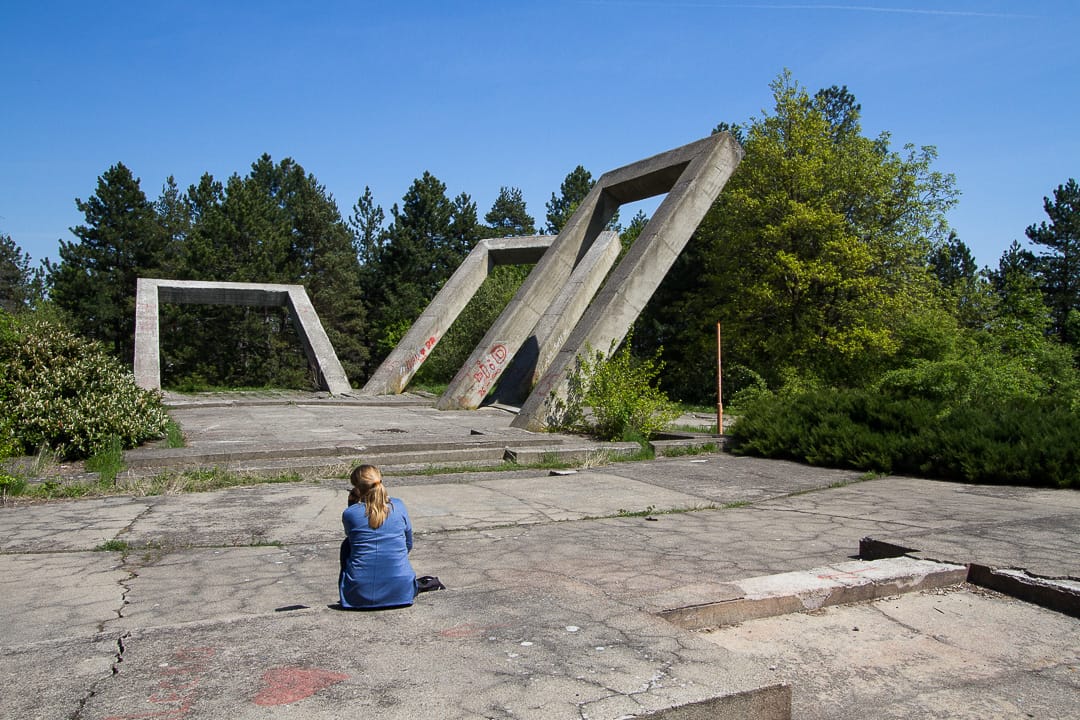
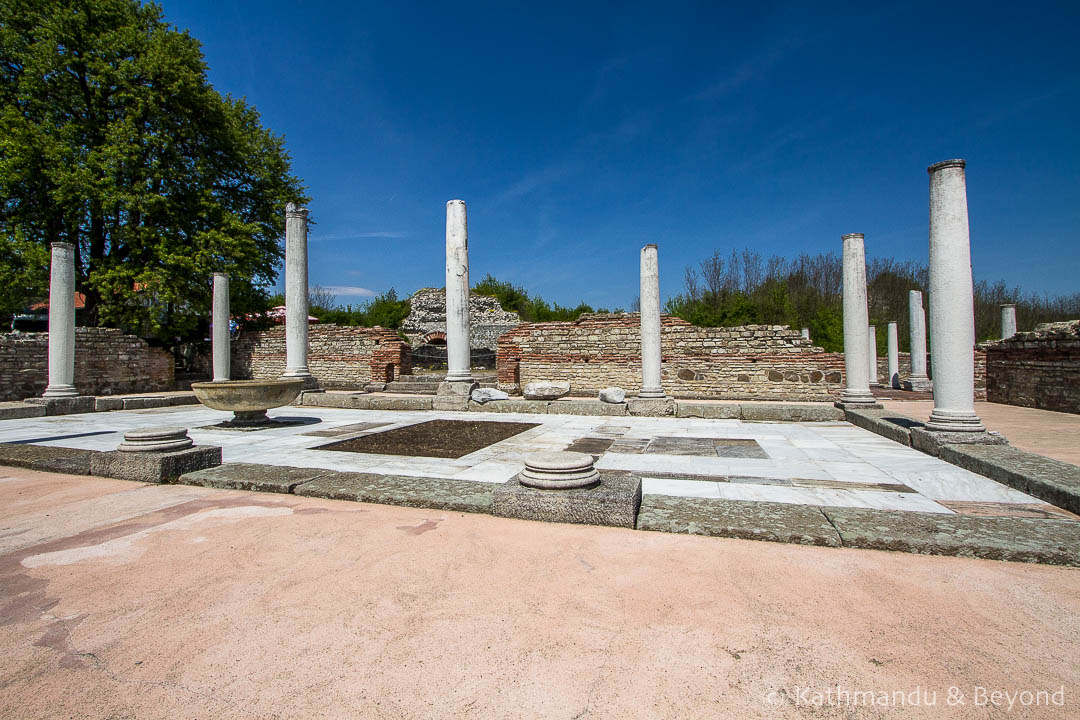
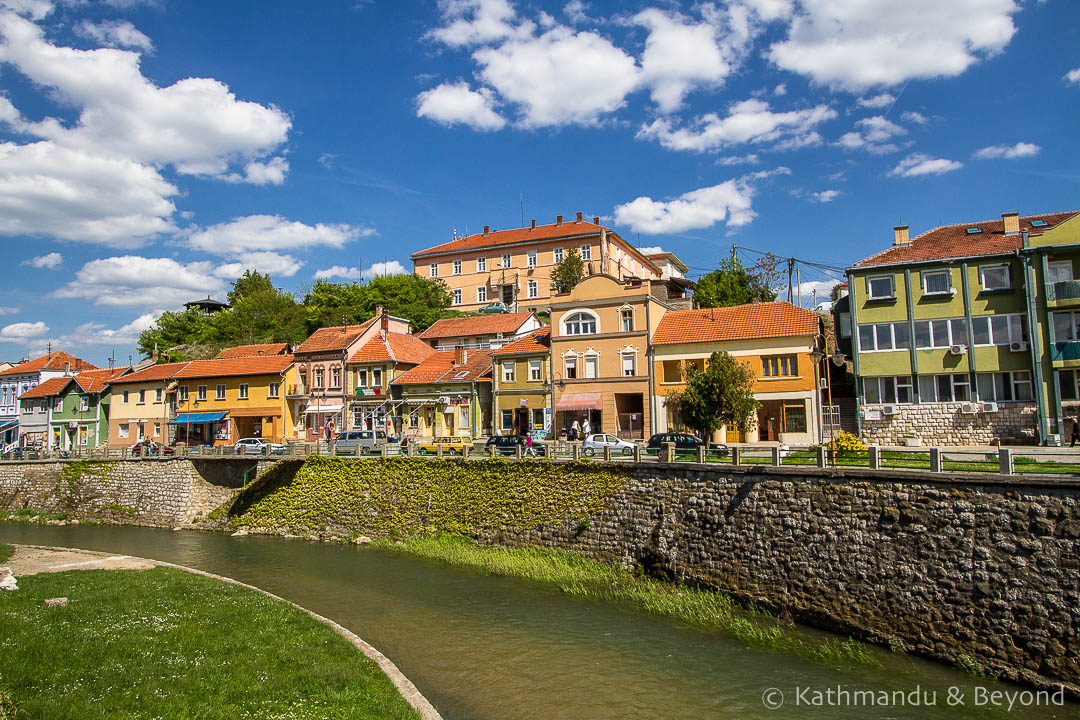
The dreaded moment had arrived – we had to hand back the hire car! It wasn’t just our Serbia road map that was in shreds, our nerves were slightly frayed too…
I worry more than Kirsty and she kept assuring me that decent car hire companies aren’t that bothered by a couple of scratches. It became apparent that we hadn’t damaged the undercarriage so I wasn’t concerned about that anymore but I assumed any car hire company would want to get what they could out of you if they spotted any damage, including scratches.
As it turned out, Kirsty was right. The young lad who came to collect the car gave it a cursory glance, checked the fuel gauge, jumped inside, bid us farewell and buggered off.
A week of worrying how much we were going to get stung for by the car hire company was over. We celebrated a successful road trip (only a few minor mishaps if you don’t count the bloody big one on the first day – it still gives me the fear, just thinking about it!) with a few beers and a huge plate of Ćevapi and called it a night.
What is driving in Serbia like?
On the whole, not too bad but then again I deliberately drove at the speed of a milk float for most of the journey. Serbian drivers weren’t as bad as we were led to believe (mostly by other Serbians!). Once you learn to ignore the person who is driving right up the arse behind you, realise it’s you who needs to slow down when you see a car coming towards you on your side of the road, and have mastered the art of parking at right angles to the kerb (i.e very badly), it is actually pretty straightforward driving in Serbia.
Kirsty became best friends with the lady on Google maps during our Serbian road trip, although she didn’t always get it right! I only pulled out on the wrong side of the road on two occasions, not bad for someone who is used to driving on the left, and we were only once stopped by the police – on the way down from Kosmaj Mountain. It was a standard check and he promptly worked out I couldn’t speak Serbian and signalled me on my way.
As you’ve probably realised, the roads in Serbia aren’t always in the best condition and our biggest takeaway for future self-drive trips is to either ask a local for advice or turn back!
Which car hire company did we use for renting a car in Serbia?
Do you think I’m going to publish that information after what we put that poor car through on day 1 of our road trip!? I know there is a slim-to-zero chance that anyone from the car hire company will ever read this blog but I’m not taking any chances! Needless to say, they were a reputable company and we paid a very reasonable €12 per day, including third-party insurance and unlimited mileage. I would recommend them. Send us a message if you would like their details. However, we did source this (and all of our subsequent Balkan road trip car rentals) through Holiday Autos. It compares a lot of car hire companies in the area to help you find the best deal. We like the fact that you are able to cancel up to 24 hours before pick-up so it makes planning a trip really easy.
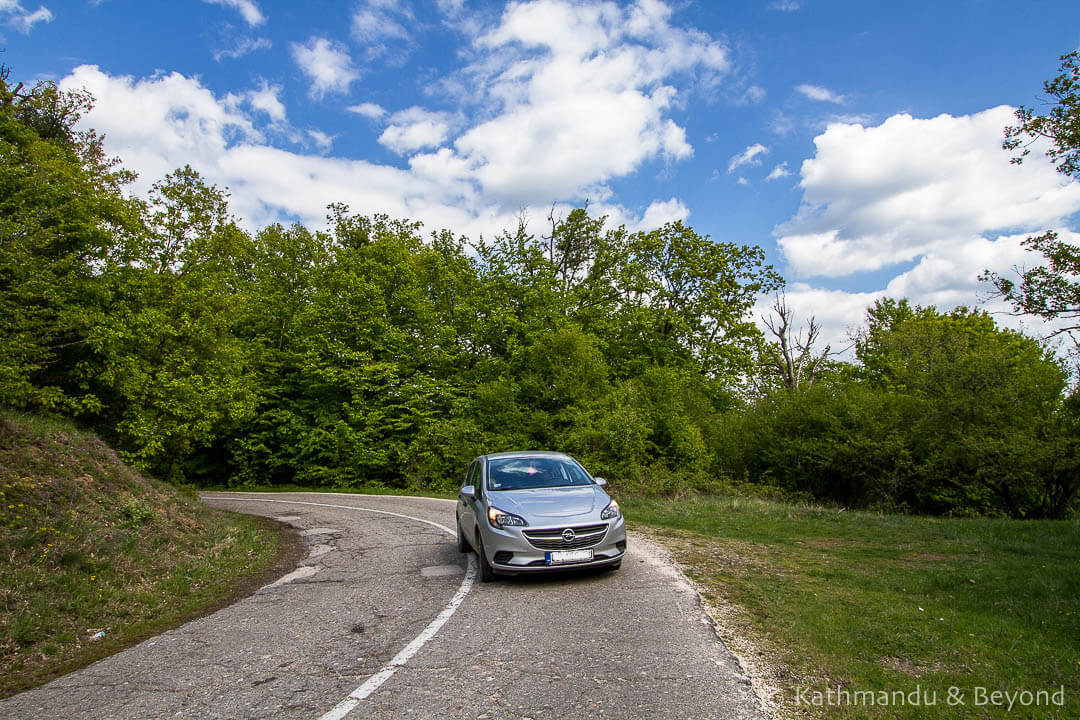
READ MORE POSTS FEATURING SERBIA
ARE YOU PLANNING A SERBIA ROAD TRIP? WHY NOT PIN IT TO YOUR BALKANS TRAVEL PLANNING BOARD FOR LATER…
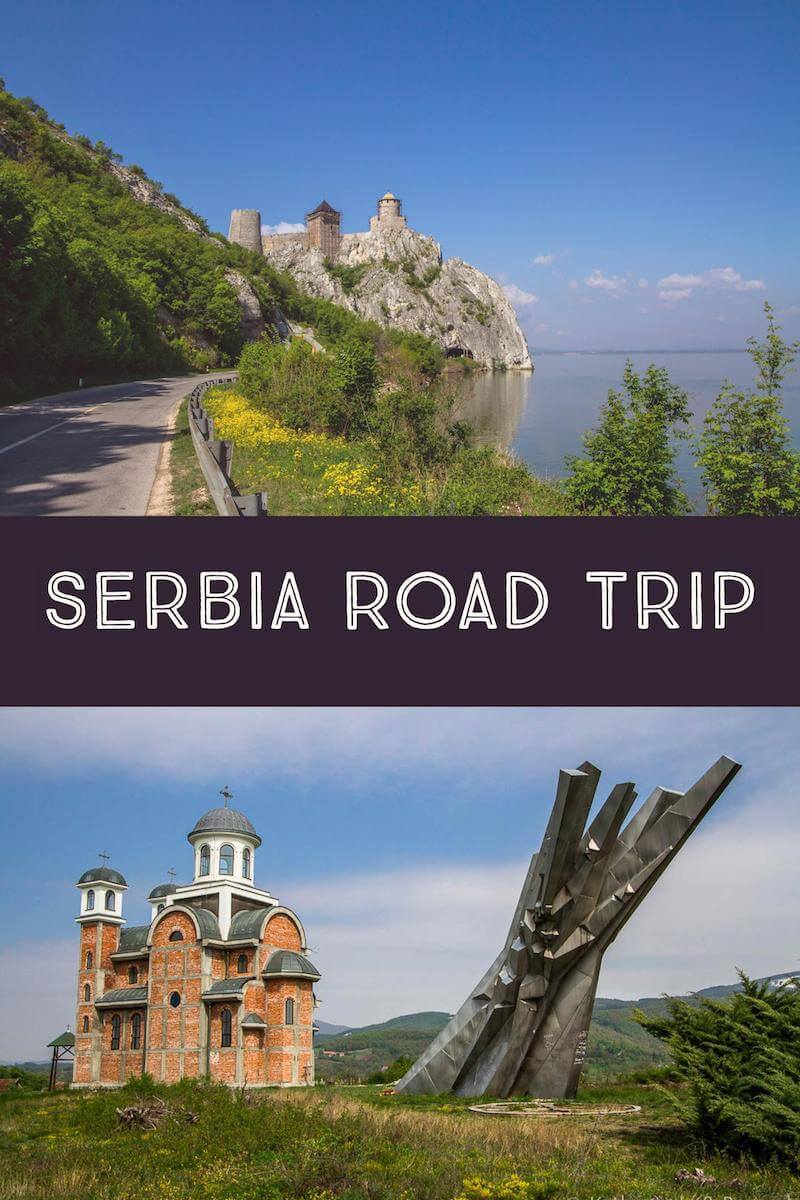
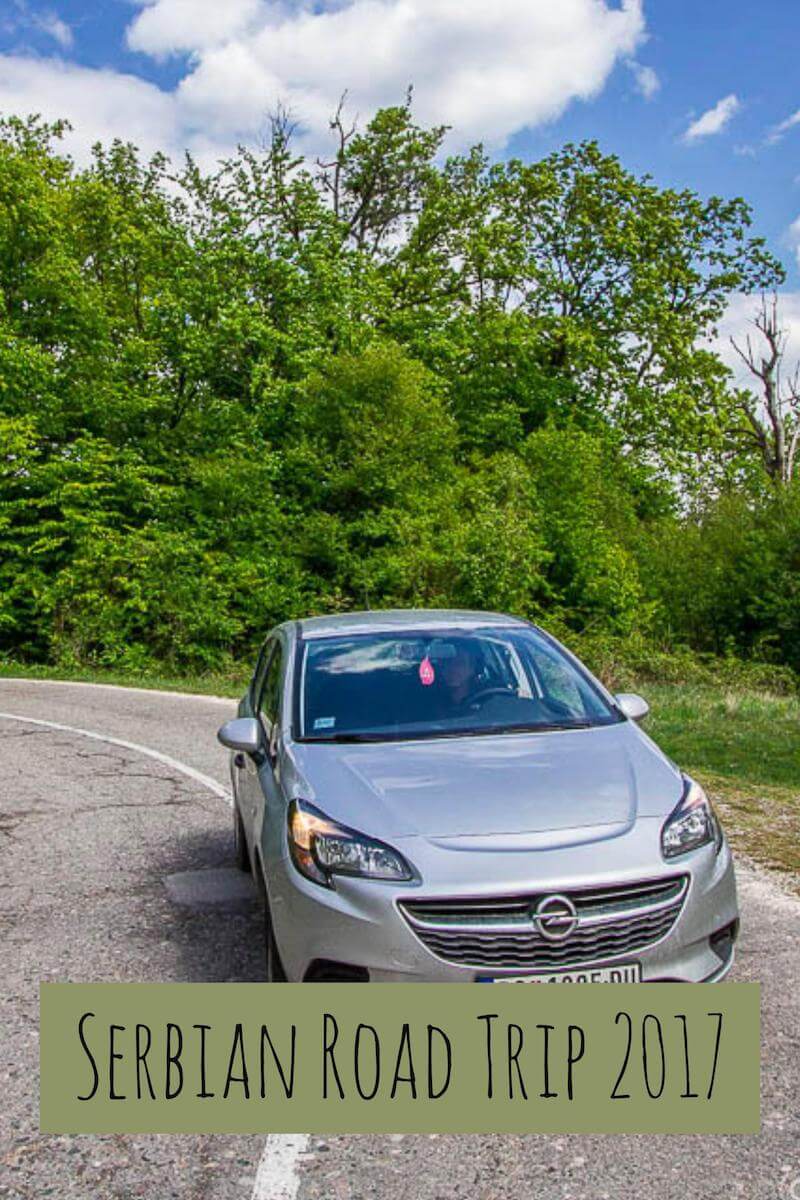
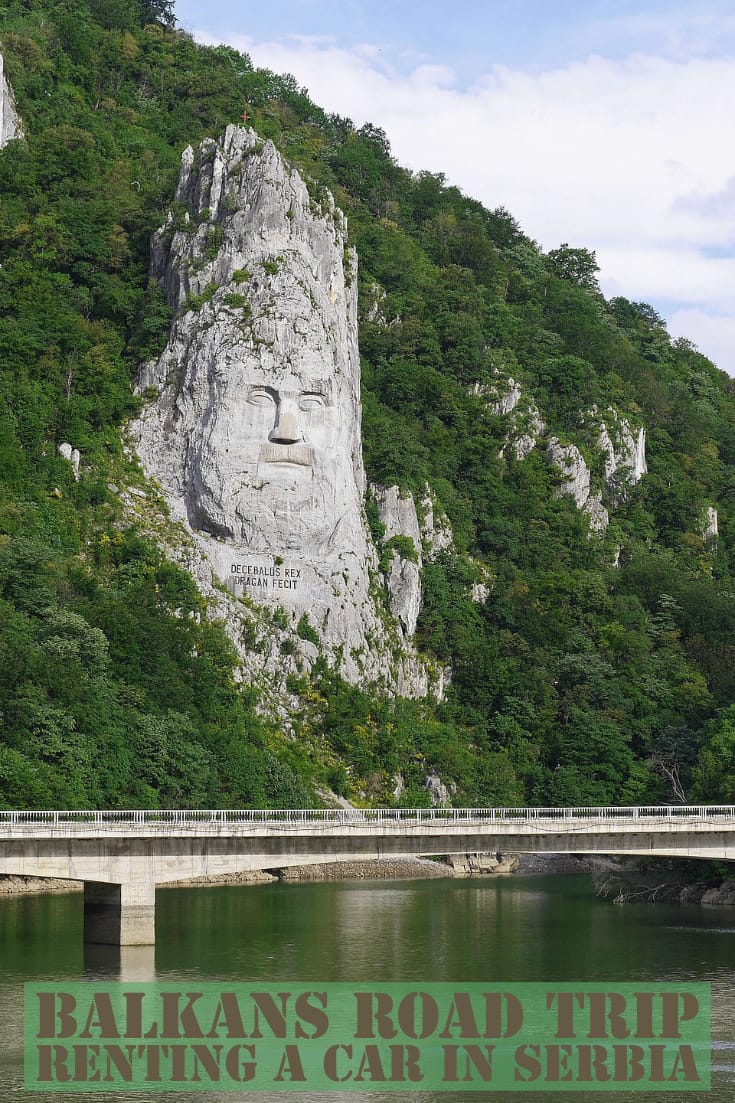

Dude! This is an awesome trip! Having all of those problems and freaking out in the beginning just make’s it even more memorable. It’s tough to find that kind of excitement. I have thought of doing a similar tour of the monuments as well. Wanted to incorporate monasteries such as Manasija. This just might be the kick in the ass that I need to go and explore Serbia. Good stuff!
And we did freak out, trust me on that one :-). I would strongly recommend a road trip around Serbia and most car hire companies allow you to take the car across borders (except for Kosovo) if you pay a supplement (about €30) so if you have the time that would also be a great option. I must admit we didn’t find out about Manasija Monastery until after we had left that region – a bit gutting but if gives us a reason to revisit! Thanks for reading and for taking the time to comment!
Very interesting. Sounds like a great trip, other than the first day. And 13 euro a day sounds pretty cheap for car rental. Do you plan other spomeniking trips in the rest of the former Yugoslavia?
Thanks Doug and yes, we do have further spomenik-searching plans. We head back to Macedonia on 16th June (we are in the UK at the moment) in order to resume our trip. The plan is to head through Macedonia then up into Kosovo and then into Montenegro. We are going to skip Croatia and Bosnia though as the prices are too high for the likes of accommodation and car hire in July and August – we will save those two countries for another day!
Wow! I didn’t know that Serbia is such a beautiful country! Excellent idea for a road trip!
Hi Agness, Serbia is probably the most underrated country in the Balkans. Most people seem to pass through having only visited Belgrade, but having a car means you can see so much more in a short space of time. The country is well worth further exploration if you get the opportunity.
hi that was great we are going to serbia in 3 weeks never been before staying in zajecar with family we are meeting for the first time just wording if you can send me the hire car name you used
thanks
We’ve sent you an email. Have a good trip!
WoW! What a great road trip! And nice tips 🙂
Serbia has a lot to show! I’m planning to go there in few months. Can you share what car rental company did you use?
Thanks 😉
Thanks, glad you found it helpful. I’ve sent you an email regarding the car hire company, although we’re probably safe from being tracked down by this point in time! But actually, we just went with the cheapest deal at the time on Holiday Autos.
I’d love to hear what car company you hired from in Serbia. Planning a trip with my three daughters and a little nervous about driving around. Did you hit Kosovo area? Did you think it was safe?
Hello Heather, we have sent you an email with the name of the car hire company we used in Serbia for this trip. We do mention what it was like driving in Serbia above, but overall, and not including our debacle on the first day, the experience was pretty OK. We have been to Kosovo a few times and found it to be very safe. We haven’t driven there and I’m not sure how many car hire companies will let you take a vehicle there, although you have a better chance of doing this from Serbia than anywhere else. Personally, I don’t think it would be a good idea, however. The public transport system in Kosovo is good and the place is small so getting around without your own transport is fairly easy.